There’s no denying that Aruba’s beaches are the island’s biggest attraction, but there’s more to this “One Happy Island” than sugary sand and turquoise water! Consider taking a tour of the north shore of Aruba, where rugged sea cliffs, lonely desert landscapes, and historic buildings await!
One of our top priorities when planning our mother-daughter trip to Aruba was making sure that we spent at least one day exploring the interior of Aruba and its rugged north shore. Our main goal was seeing Arikok National Park, the wonderland of desert terrain, volcanic hills, historic and cultural sites, flora, and fauna that comprises almost 20% of the island. Tucked away in a remote corner of the park is the Natural Pool, also known as Conchi, which is perhaps Aruba’s most famous natural attraction. There, a natural rock formation has created a gorgeous swimming hole blissfully protected from the angry surf beyond.
We couldn’t wait to check it out.
After examining our options, we chose to take a guided Jeep Safari tour that included not only the Natural Pool and Arikok National Park but also a few others of the island’s most popular sites, such as the California Lighthouse, Alto Vista Chapel, the Bushiribana Gold Mill Ruins, and the Natural Bridge. It felt like a lot to pack into one six-hour tour, but it also felt like a lot of bang for our buck. Instead of just the park, we were going to get to visit almost the entire north shore of Aruba!
And so, as our third day dawned on this “One Happy Island,” we found ourselves piling into the covered bed of a brightly-painted pickup truck from Rockabeach Tours.
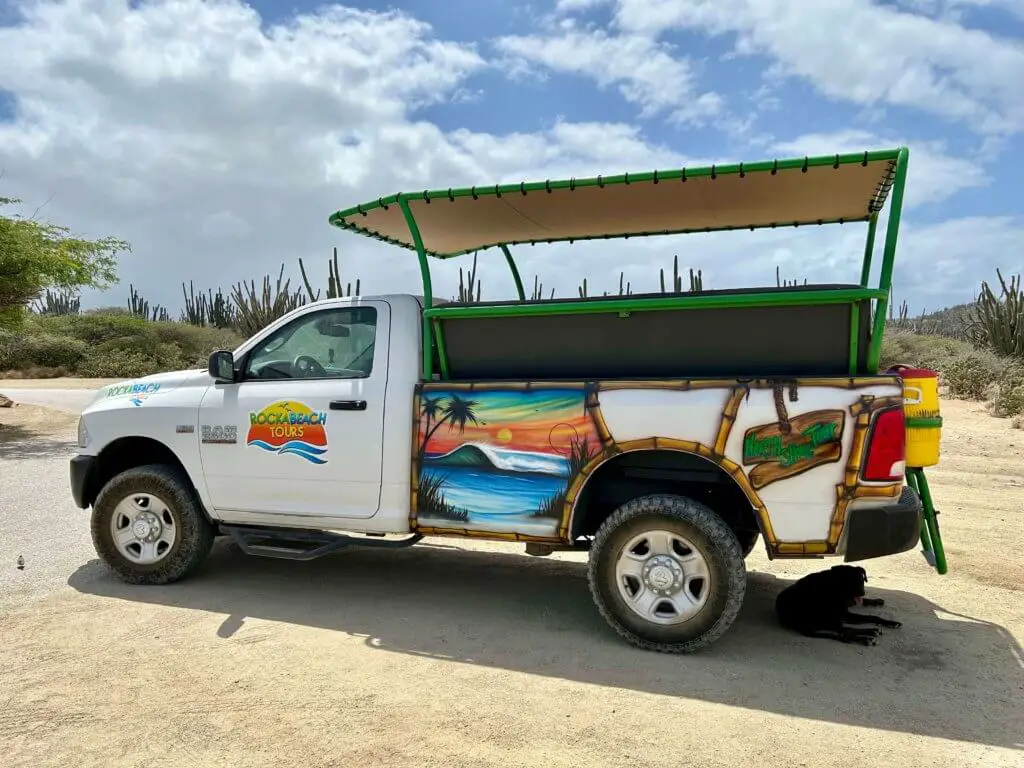
Our guide’s name was Hugo, which was easy to remember after he reminded us, “Wherever I go, Hugo.” Although he had the misfortune of having to disappoint us right off the bat, as you’ll see below, he ended up taking great care of us throughout the day and we really enjoyed traveling with him.
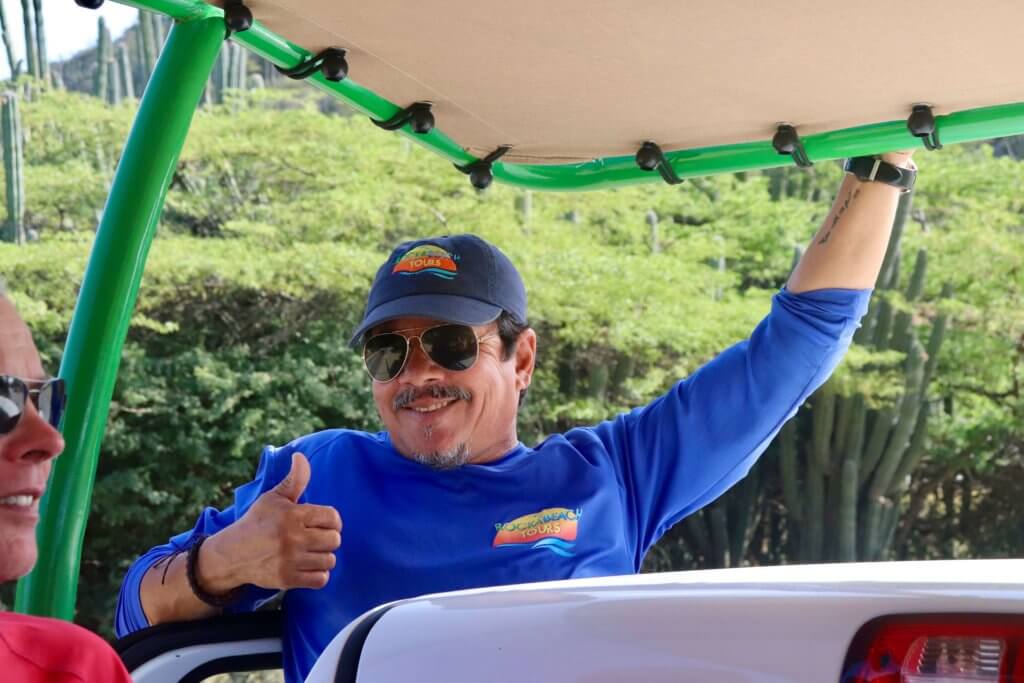
Our first destination – after a quick stop at the company office so that our fellow tour members, two French couples, could sign their liability paperwork – was Arikok National Park on our way to the Natural Pool/Conchi.
Talking was futile in the back of the pickup; Aruba is known for being breezy, but we had been experiencing stronger than normal winds since we arrived. Now, they pummeled us as we sped along and whipped away whatever words we might have chanced to share with each other.
Thankfully, there was plenty to see as we drove through neighborhoods, including Hugo’s own, and under the shadow of the famous Hooiberg, a cone-shaped hill that stands all by itself in the middle of the island.
Shortly after, we arrived at Arikok National Park.
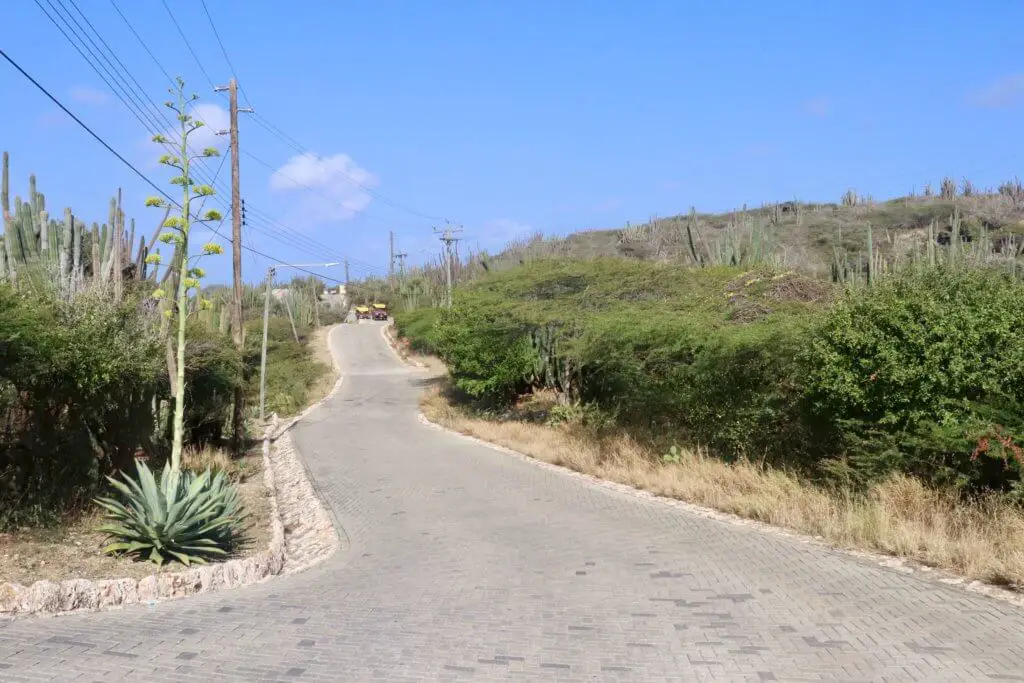
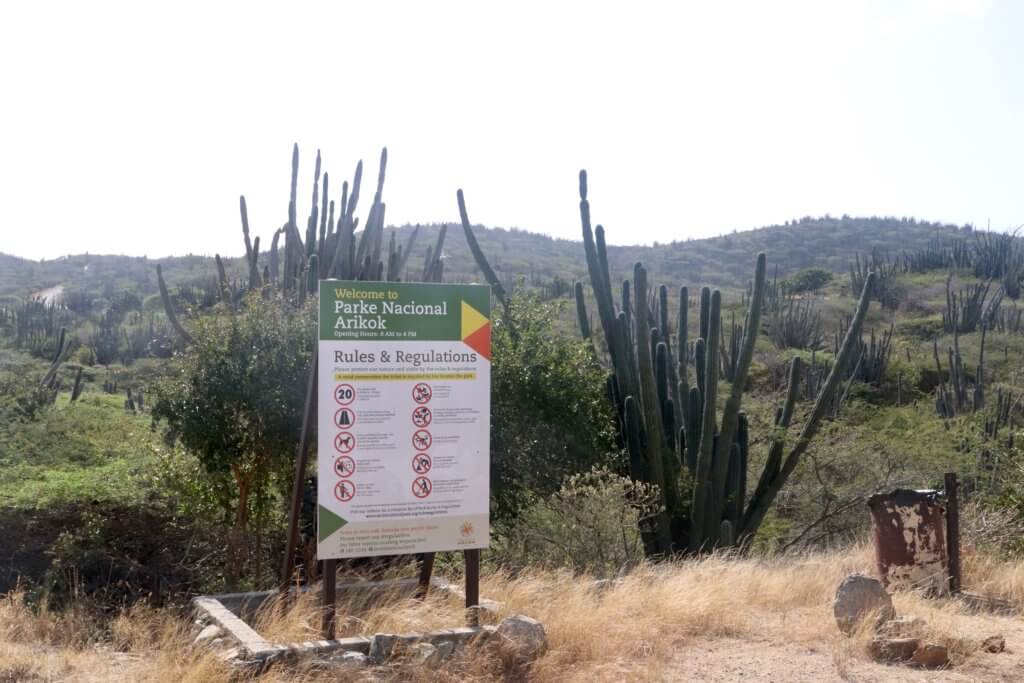
I suspected that we might be in trouble the moment we pulled up to the guard station at the park entrance. There, in big, painted letters, was a sign announcing, “Pool Closed.” My fears were confirmed when Hugo pulled over, hoisted himself out to sit on the open window of the pickup, and gave us the bad news. The weather – including those winds we’d been experiencing – had forced the closure of the pool for safety reasons. There would be no swimming today.
We now had two choices: he could drive us to the pool, which would entail forty-five minutes each way of rough, bumpy roads just to have a look around and drive right back. Plus, he added, the scenery along the way wouldn’t be any different from what we’d already seen or what we would experience on the other stops on the tour. Alternatively, he offered to use that hour and a half to show us a couple of other places on the island, including a spot where we could do some snorkeling.
I’ll spare you the details of the debate that took place in the back of the pickup as we all tried to weigh our options and preferences in deference to the group. In the end, we took Hugo’s advice and decided to abandon the Natural Pool. He shimmied back through the window, turned the pickup around, and we left Arikok behind in our literal dust. My last glimpse of Arikok National Park was of the winding road to Conchi rolling off toward that distant, remote corner of the park that we weren’t going to get to see.
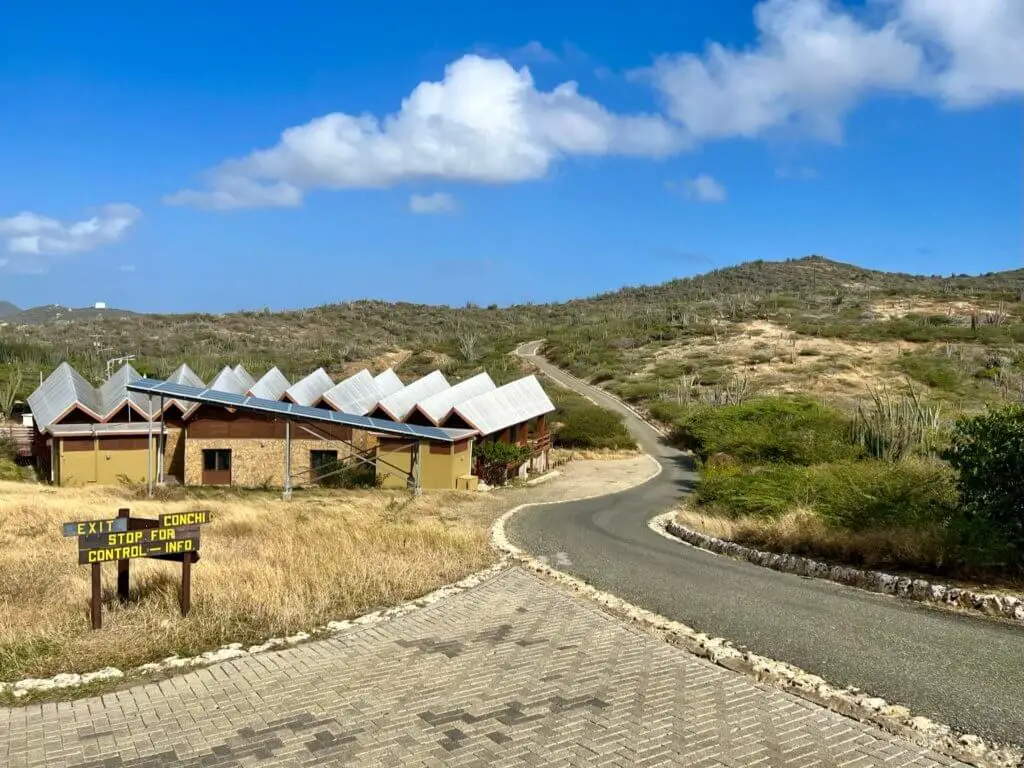
While I certainly wasn’t going to impress my will upon the whole group, I’ll admit that I was disappointed not to at least be able to see the Natural Pool, even if we couldn’t go in. As a former tour guide, I respected Hugo for offering us a choice, and he ended up making good on his promise to take us to some other great spots, as you’ll see below. But, in the moment, I was really bummed to not be able to experience one of the parts of Aruba I had most been looking forward to, not to mention one of the spots that would likely be of most interest to Full Life, Full Passport readers planning their own trips.
Nevertheless, Arikok was now behind us, and we found ourselves heading south past the island’s donkey sanctuary and through a supposedly-haunted passage between cliffs known as Frenchman’s Pass.
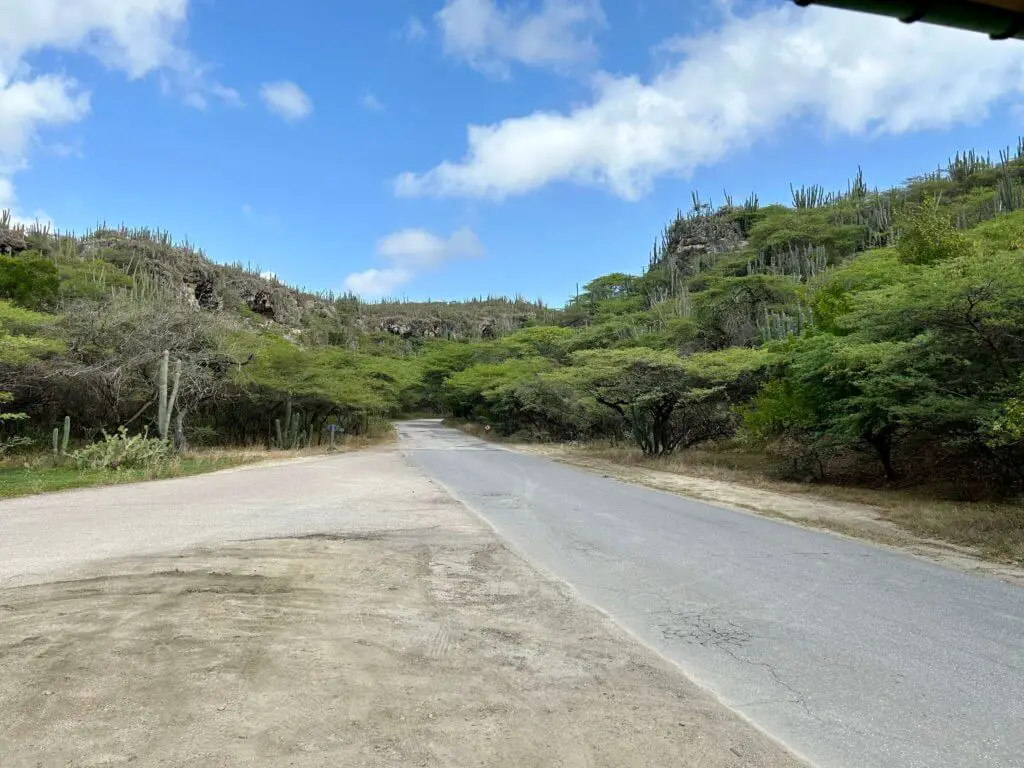
The first of Hugo’s consolation stops was a beach on the southern coast called Mangel Halto, which seemed to be populated more by locals than tourists. Weather-worn rocks hung over gorgeous blue water, and the walk to the sandy part of the beach was lined with mangroves and other foliage.
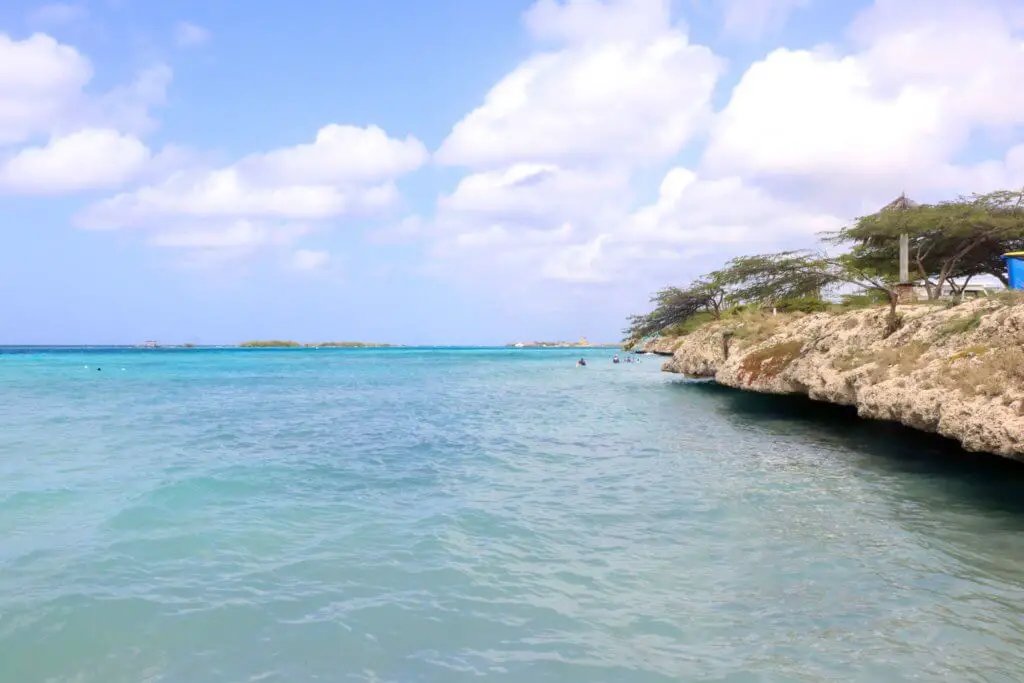
There was lots of shade along the path to the beach, with the sea coming right up through the mangroves in some areas and the vegetation creating natural alcoves in others. A large extended family was tucked into one of the shady spots having what seemed to be a birthday barbecue, and it looked like an absolutely perfect way to spend the day!
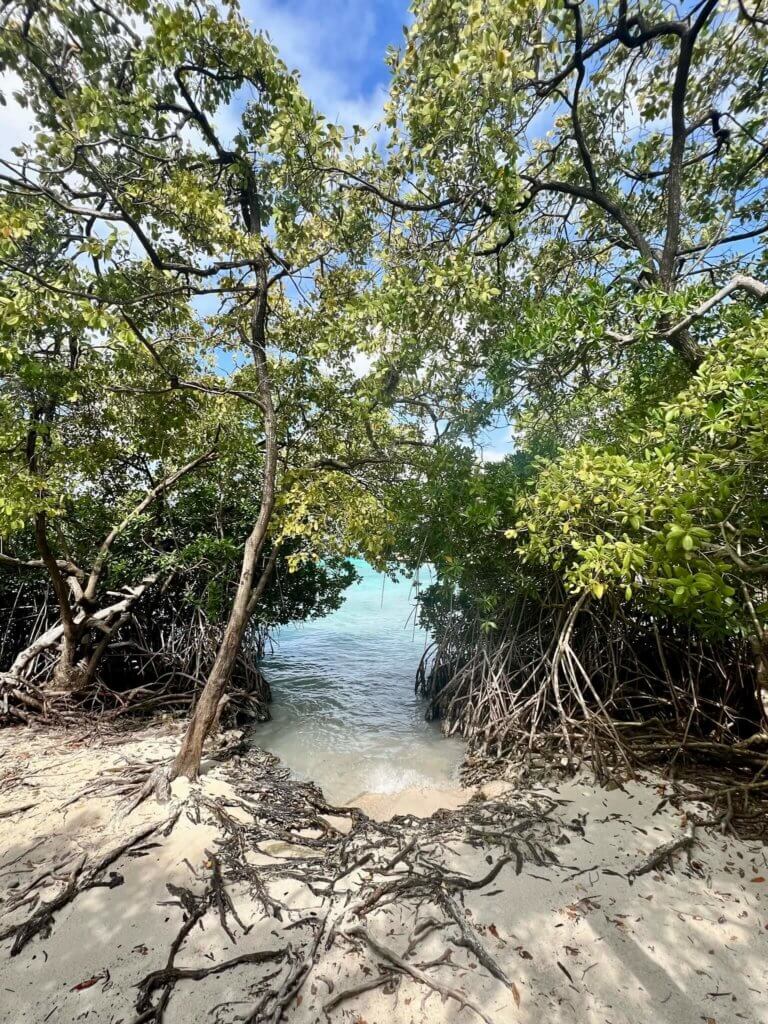
After a short walk, we emerged into a small sandy beach. Waves were crashing in the distance, behind some rocks that created a barrier to form a wide, shallow pool near the shore.
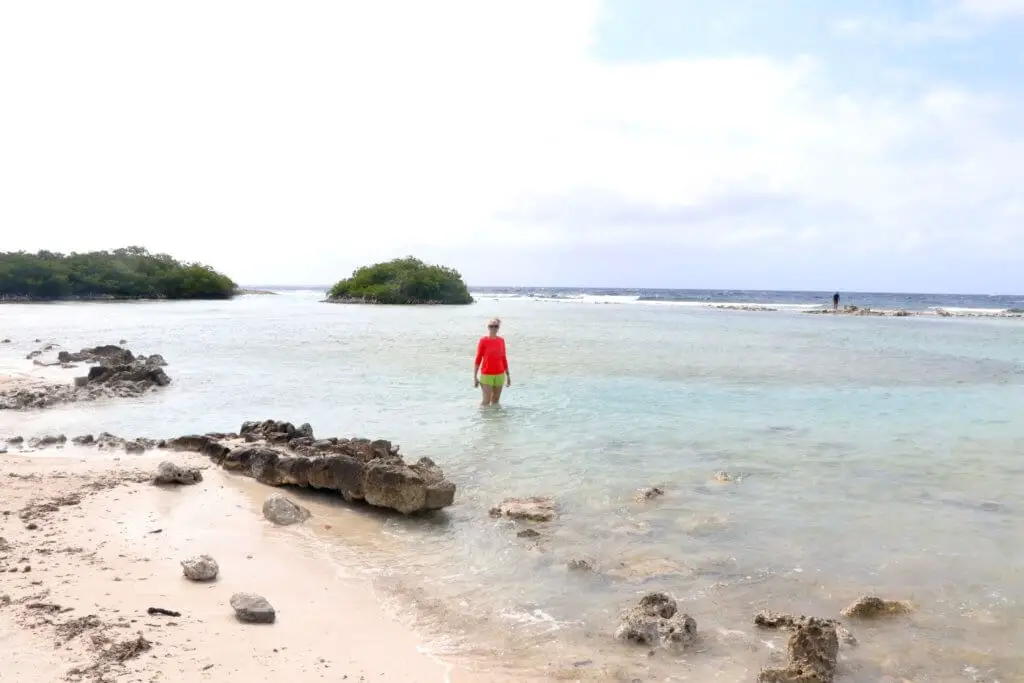
The beach may have been wilder and rockier than the postcard-perfect stretches of sand near the resorts, but it was lovely and uncrowded and felt secluded and intimate.
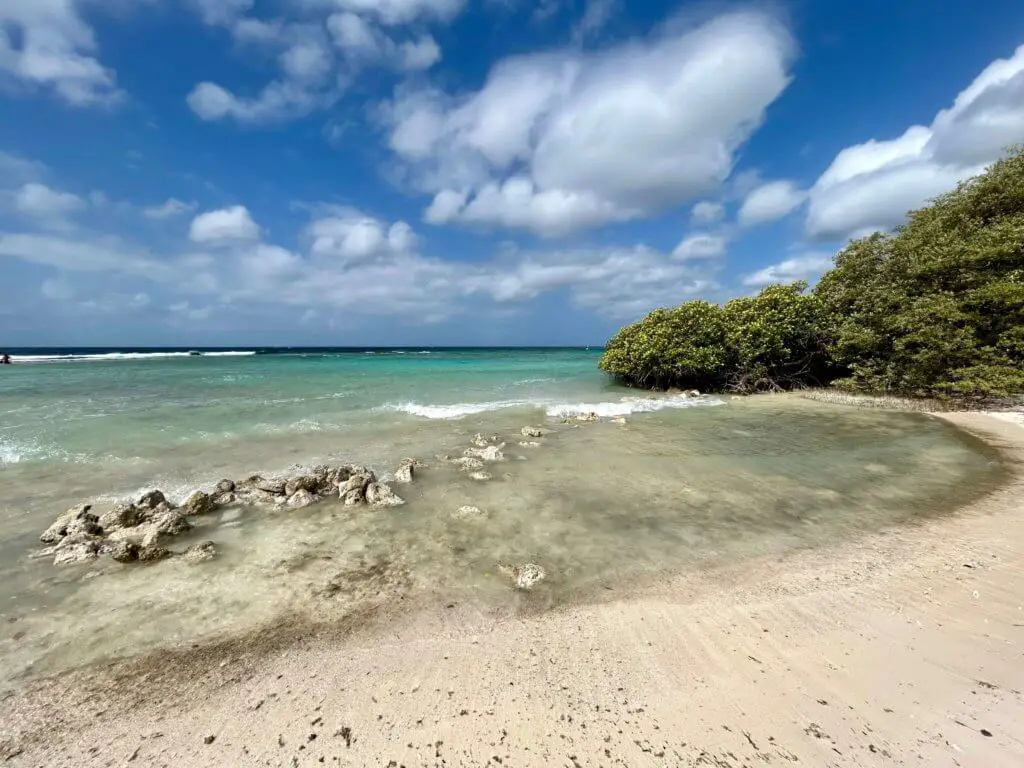
While we didn’t have time to do much swimming or sunbathing, Hugo didn’t rush us. By the time we returned to the pickup, the sun and sand had gone a long way in restoring my good mood and confidence in the day.
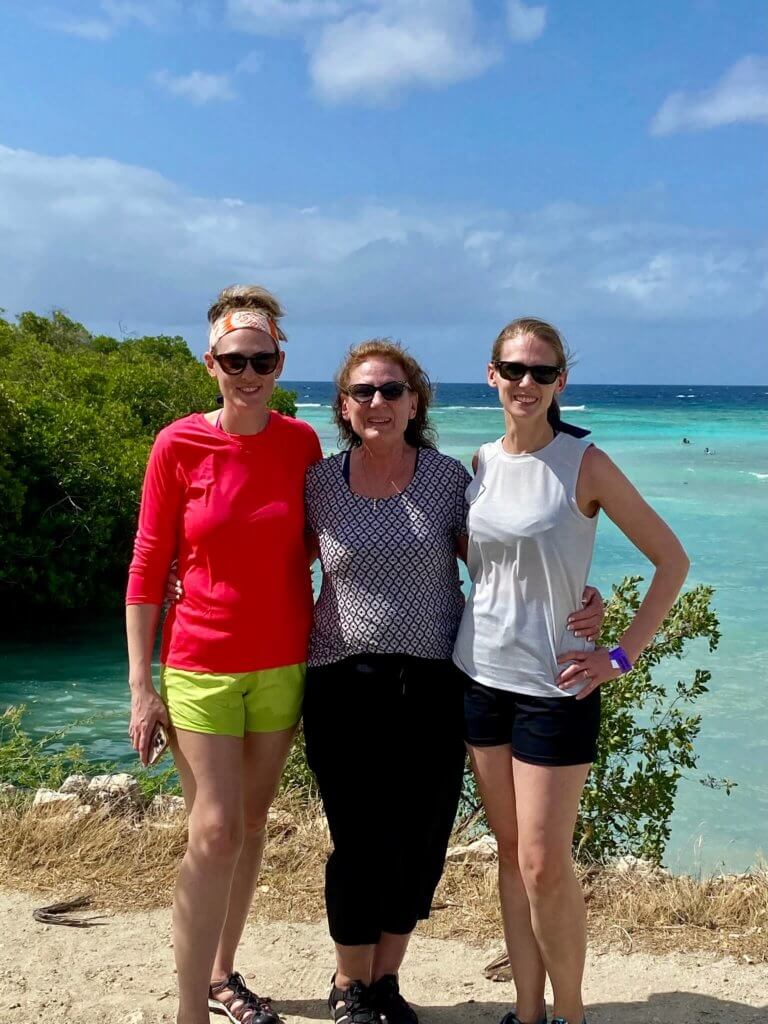
After Mangel Halto, we drove back across the island to continue with our original north shore of Aruba itinerary. Our destination was the Natural Bridge, another of the island’s famous landmarks. Along the way, we passed a bit of cactus-punctuated coastline…
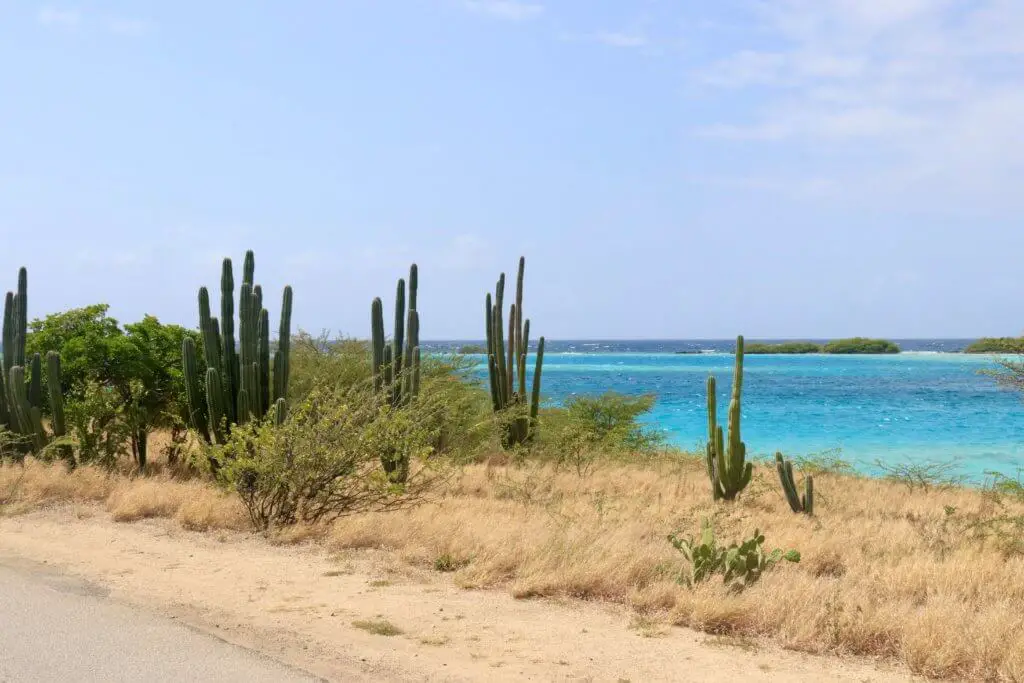
… the Spanish Lagoon (a popular snorkeling and kayaking spot), and made a quick stop within view of the Ayo Rock Formations. This pile of massive boulders, improbably plopped in the middle of the island, is another popular attraction on Aruba, and many tours will stop for a longer visit to explore the rocks properly. We only paused long enough for Hugo to point them out and tell us a little about them before continuing on our way.
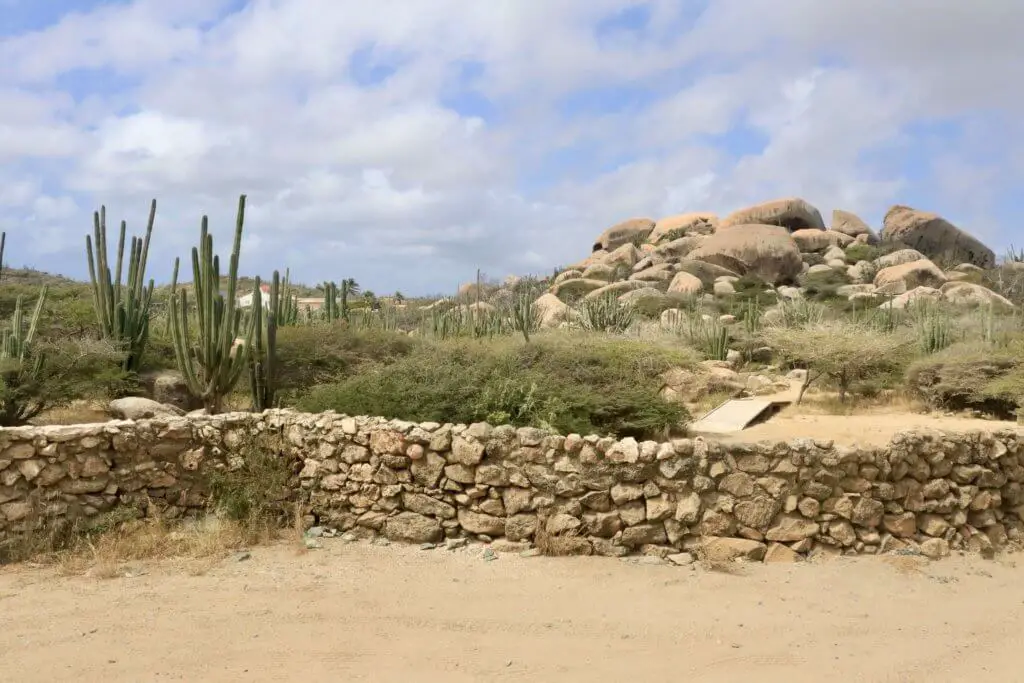
We didn’t mind the quick stop, though, because the scenery got even more spectacular once we reached the northern coast. There, we were treated to continuous views of waves pounding against dramatic sea cliffs. Centuries of surf have carved dozens of coves and inlets into the rock, as well as multiple natural bridges, tunnels, and sea caves. The sight of the rugged brown cliffs against the blue water was – no pun intended – striking.
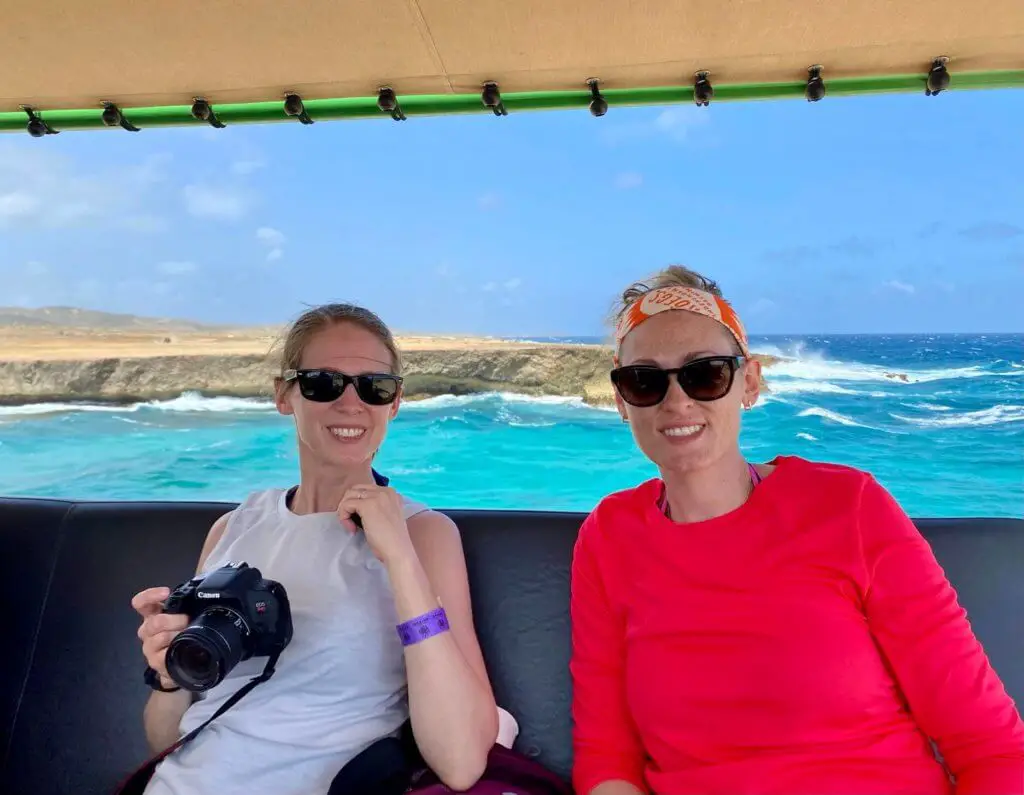
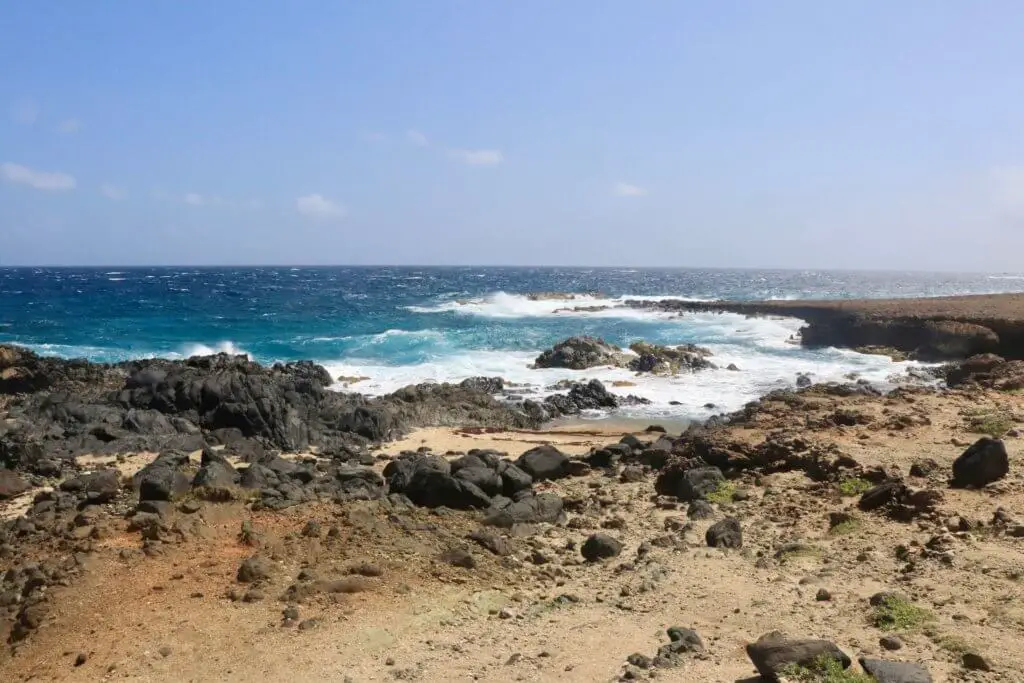
Eventually, after a bumpy and windy ride, we reached the Natural Bridge. A bright yellow visitor center greeted us, as did a number of tour buses, ATV’s and UTV’s, and other vehicles expelling people to take in the site.
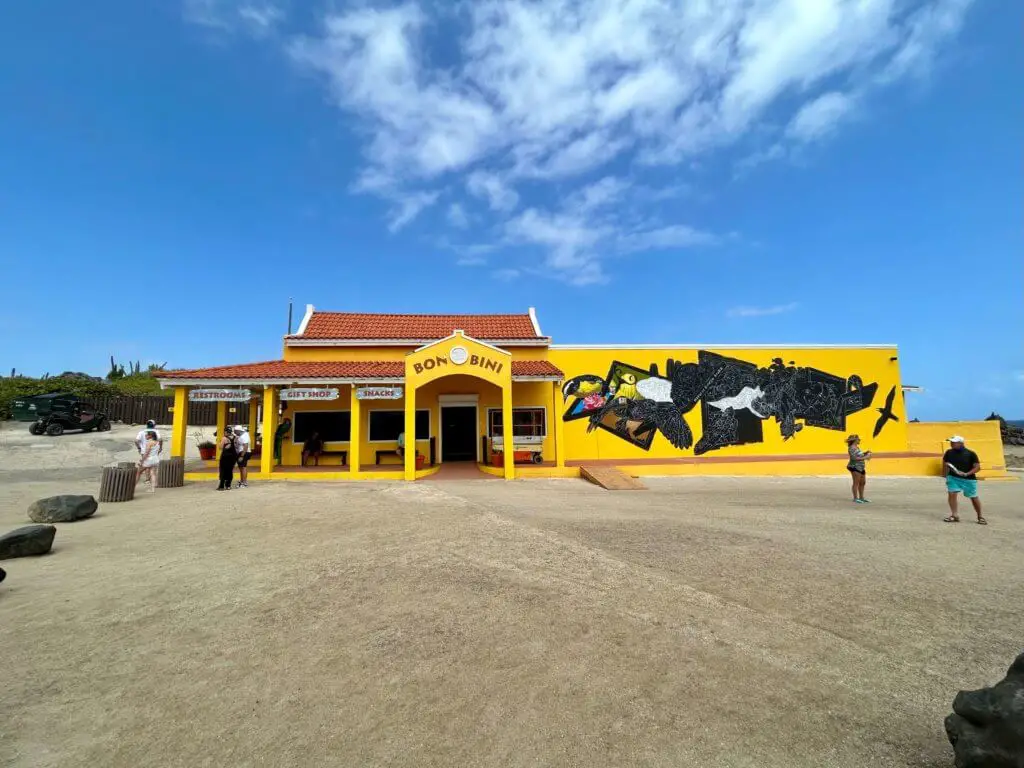
Long a symbol of Aruba, the Natural Bridge was a hundred feet long and roughly twenty-five feet high until it collapsed in 2005. Today, visitors can view the massive slabs that remain in a heap where the bridge used to be, as well as the “Baby Bridge,” a smaller natural bridge right beside it.
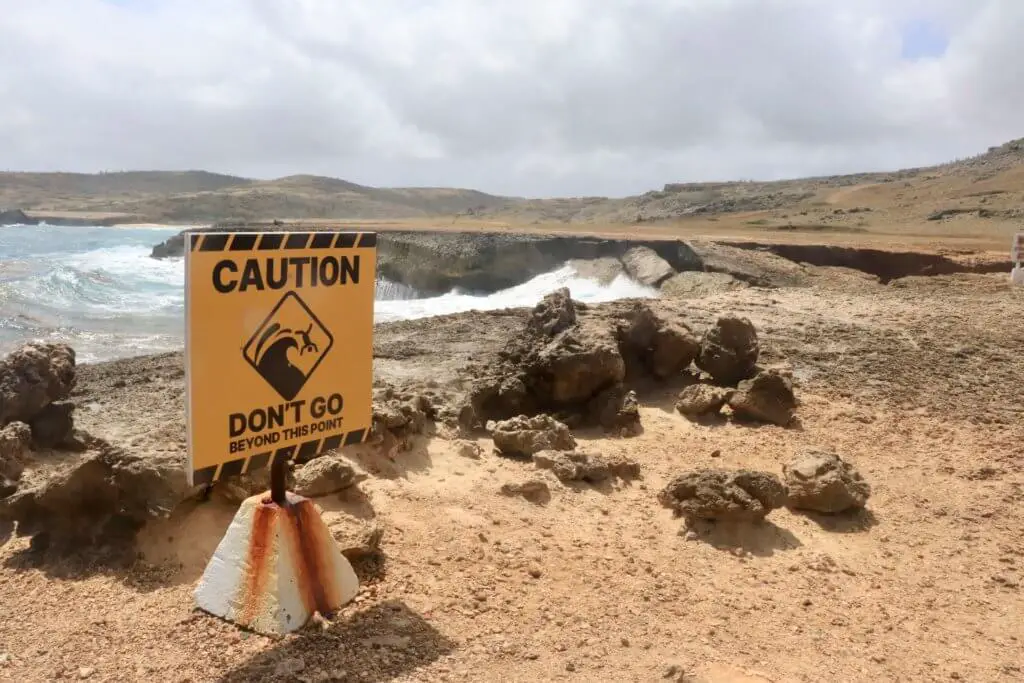
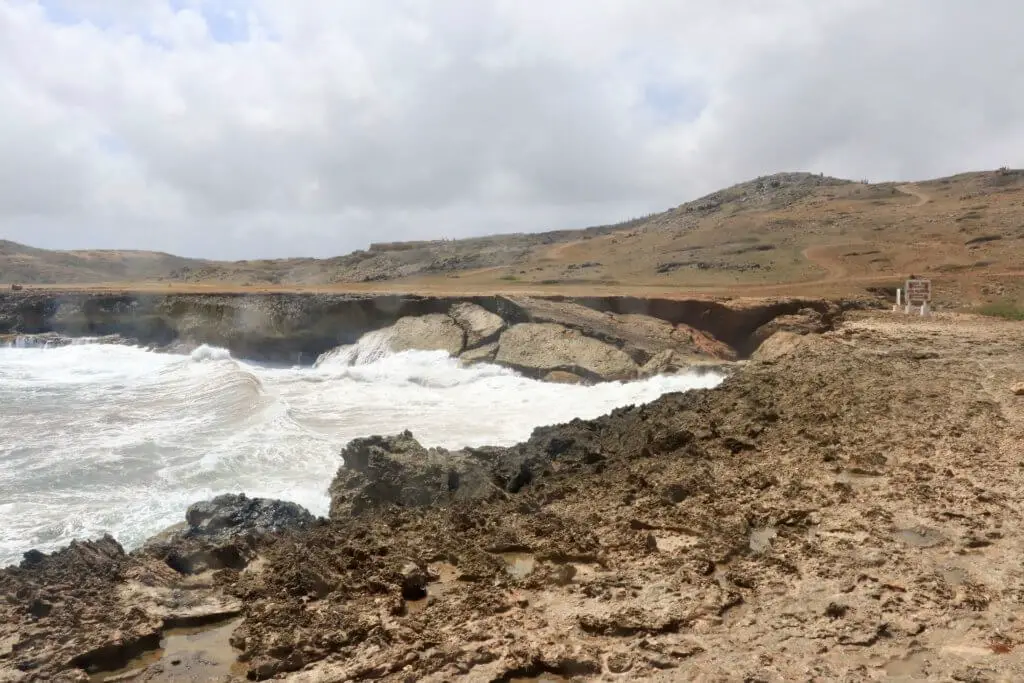
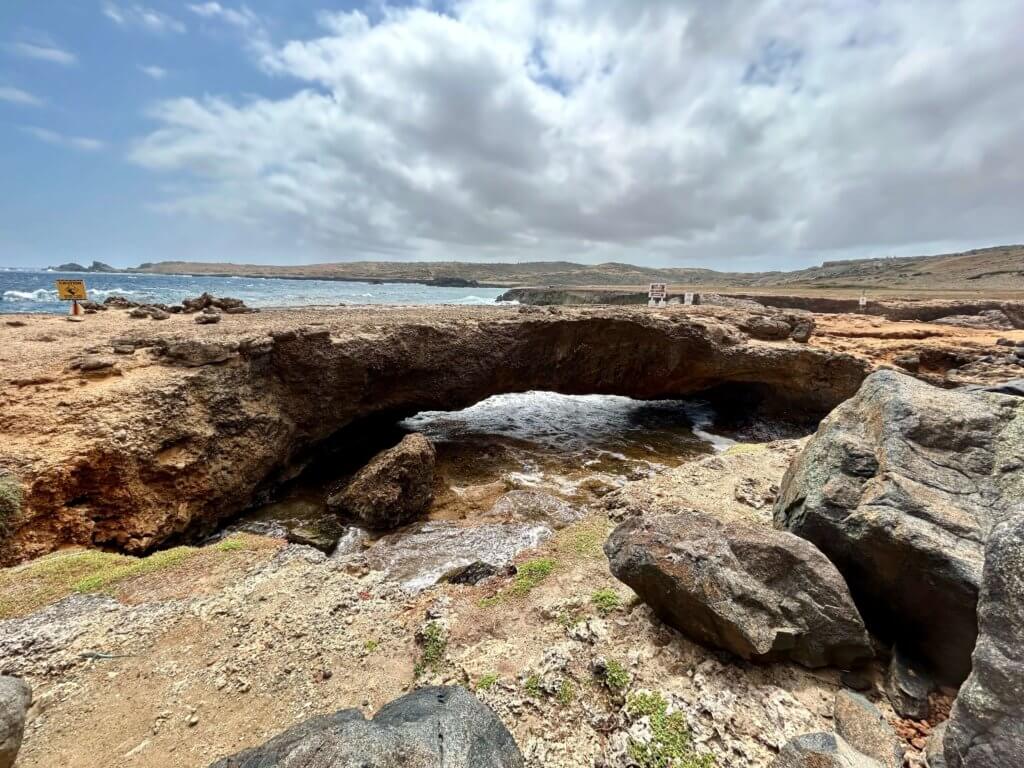
The whole area around the Natural Bridge was dramatic, with big boulders, a rock-strewn coastline, and big waves sending clouds of white spray high into the air with every slam against the rocks. There were plenty of signs warning folks to avoid certain areas due to the risk of falling or collapsing earth, but there were also plenty of people ignoring those signs in search of better views or the perfect selfie.
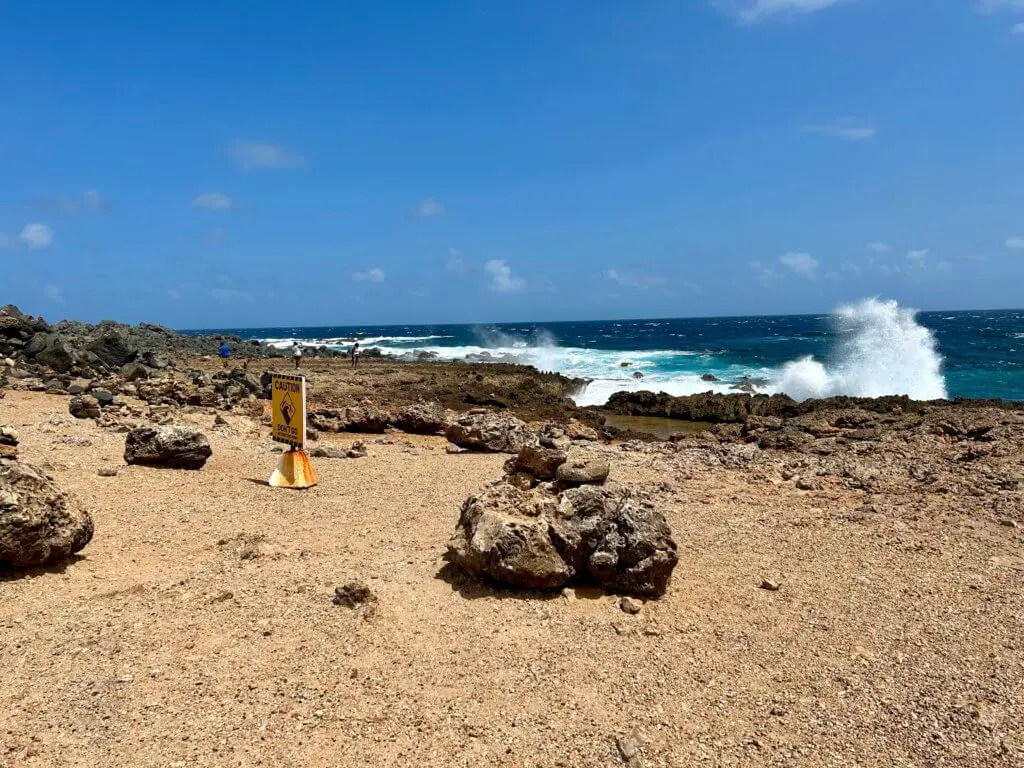
Our stop was also perfectly timed for bathroom breaks and a snack at the little visitor center. At Hugo’s recommendation, we tried our first pastechis of the trip: heavenly pastries filled with delicious cheese. (You can order pastechis with lots of different kinds of fillings, but I found that plain cheese was the best.)
So simple, and so satisfying.
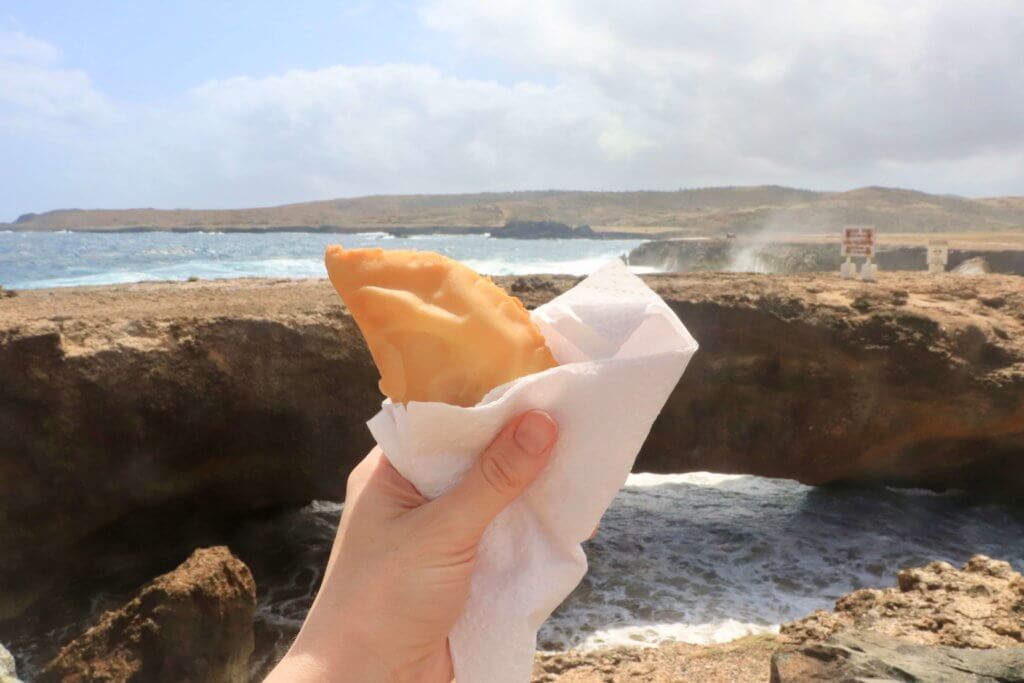
Soon enough, it was time to move on to our next destination: the Cave Pool. Tucked into the cliffs between the Natural Bridge and the Bushiribana ruins is a sea cave that is separated from the open ocean by collapsed rocks from the cliffs above. The result is a natural swimming hole with beautiful water and ledges for cliff jumping.
According to Hugo, he and his friends used to come to the cave pool all the time growing up, and it was always a bit of a local secret. Recently, however, the cave pool started appearing on social media, and now that secret’s out. While I generally lament hidden gems suddenly becoming must-see destinations, I’m selfishly glad that the internet discovered the cave pool because it ended up being the highlight of my day!
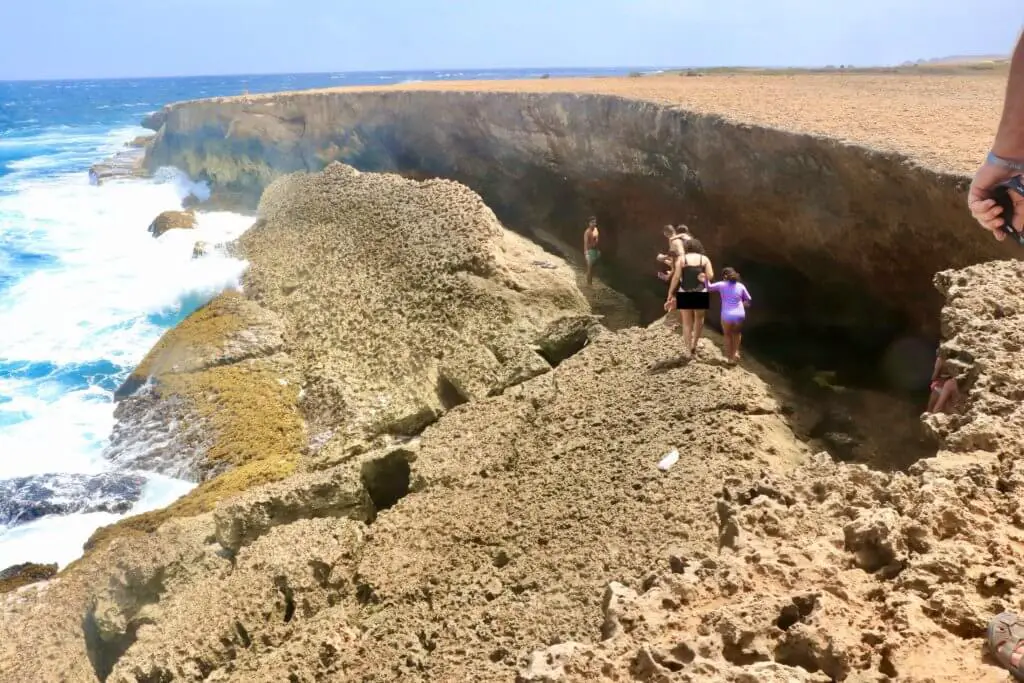
Getting to the cave pool isn’t for the faint of heart; there’s a wooden ladder to descend, a bunch of wet and uneven rocks to scramble over, and a ledge to jump off to reach the water beneath. With the rough surf we had been experiencing, the journey was made all the more perilous by the waves that were crashing high against the rocks and making the path more slippery than usual.
In the end, Brooke and I were the only ones who were game to give the cave pool a go. After getting a serious but good-natured warning from Hugo that we needed to do exactly as he said as we made our way down, we bid adieu to the rest of the group and started descending the ladder.
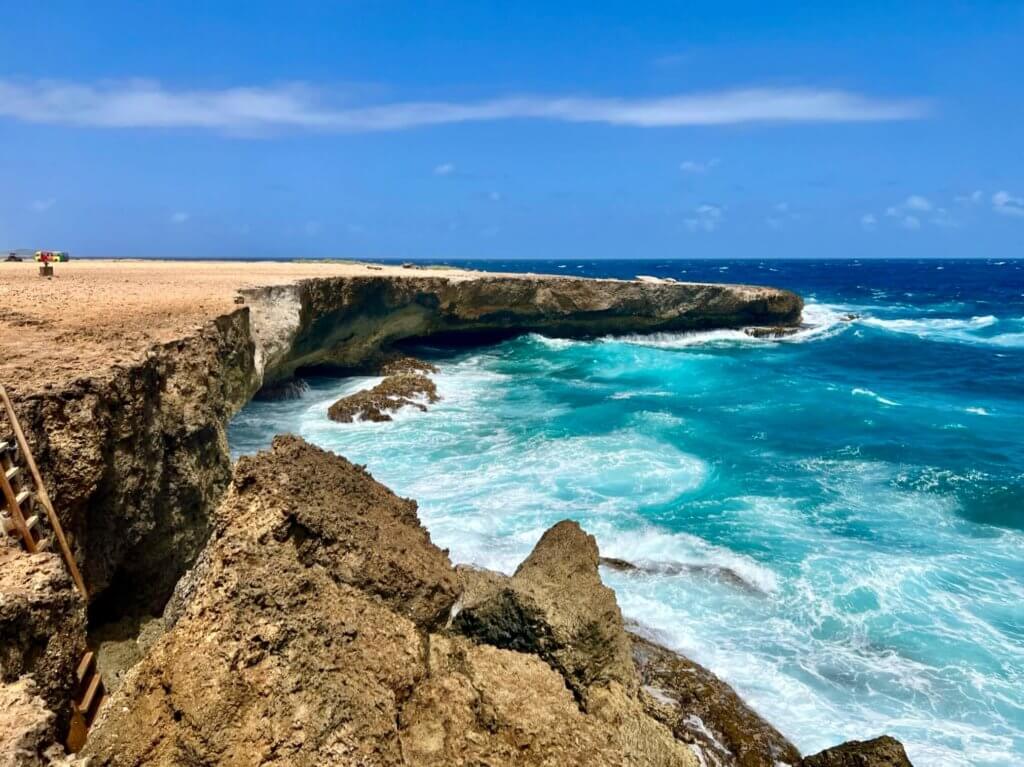
Hugo was absolutely awesome at guiding Brooke and me on this little adventure. He knew the place like the back of his hand and expertly told us where to step and when. With his help, we made it safely to the ledge and soon found ourselves staring down into the crystal-clear water below.
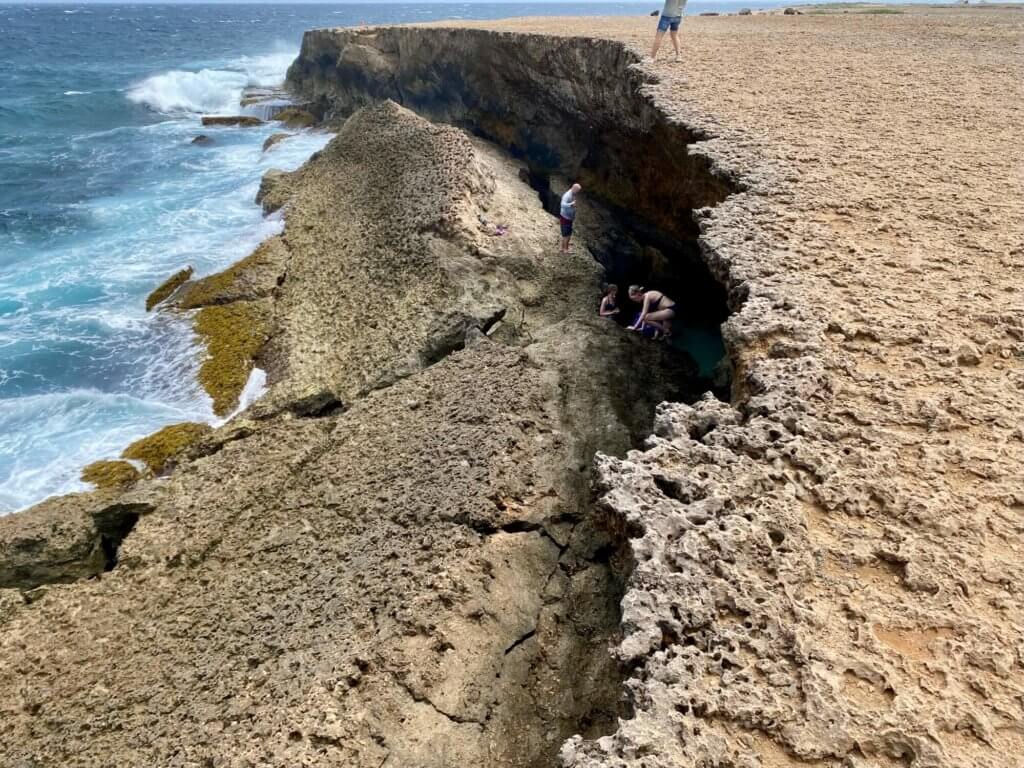
At that point, there was no turning back. There was nothing for it but to take a deep breath, bend your knees, and jump in!
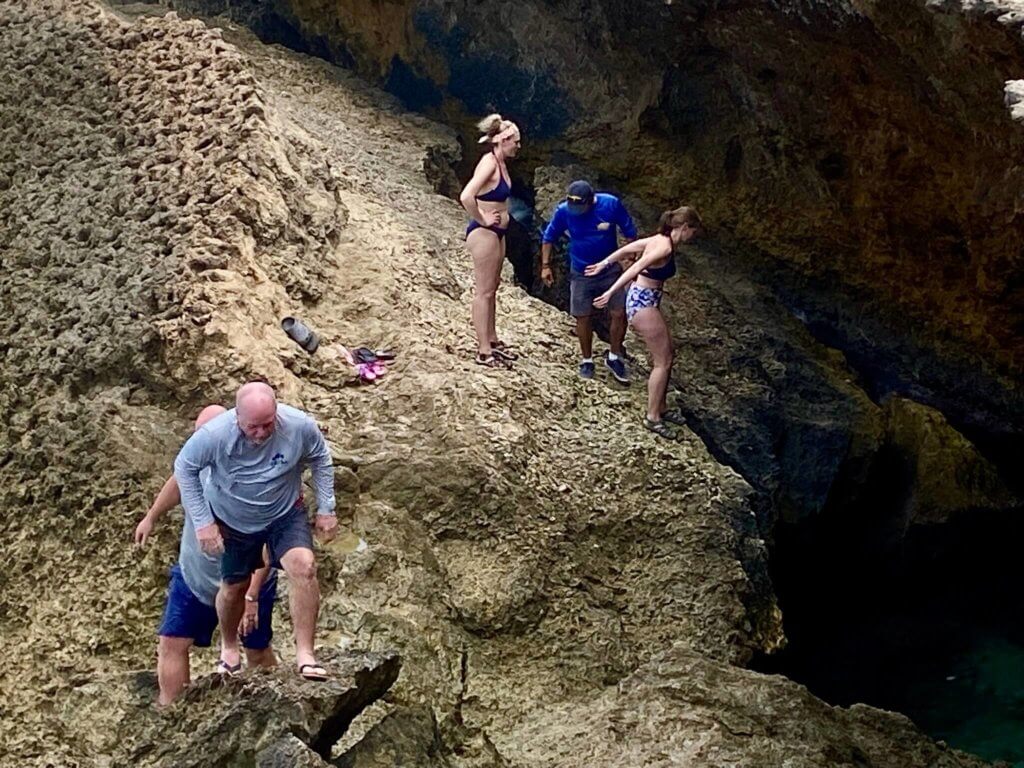
Now, those of you who have been around here for a while know that, as much as I love traveling and new experiences, I’m not much of an adrenaline junkie. I don’t seek out dangerous situations, and I generally don’t have any interest in things like skydiving, bungee jumping, cliff jumping, base jumping… really most any jumping.
I feel a little foolish saying so, since the ledge to jump into the cave pool really isn’t all that high relatively-speaking, but it was such a rush to leap off and I was so proud of myself for doing it! I may have gripped Hugo’s hand extra tightly creeping down to the edge, I may have asked him if I could sit down and just sort of scoot off (“Absolutely not.”), I may have really bent my knees and swung my arms to gear up for the jump rather than just hopping off like a normal person, and I may have shrieked like a banshee once airborne. But I did it! I came back to the surface with a rush of adrenaline, a swell of pride, and an overwhelming sense of gratitude for the whole experience.
A moment later, Brooke jumped in as well, and we spent a couple of moments bobbing around and exploring the cave. The water is generally pretty calm, but on that day the current was strong and it wasn’t really a pleasant spot to linger for long. With Hugo’s unfailing guidance, Brooke and I climbed out of the water and made our way back to our mom and the rest of the group. I was on a total adrenaline high as we toweled off and loaded into the pickup to make the short drive to the Bushiribana Gold Mill Ruins.
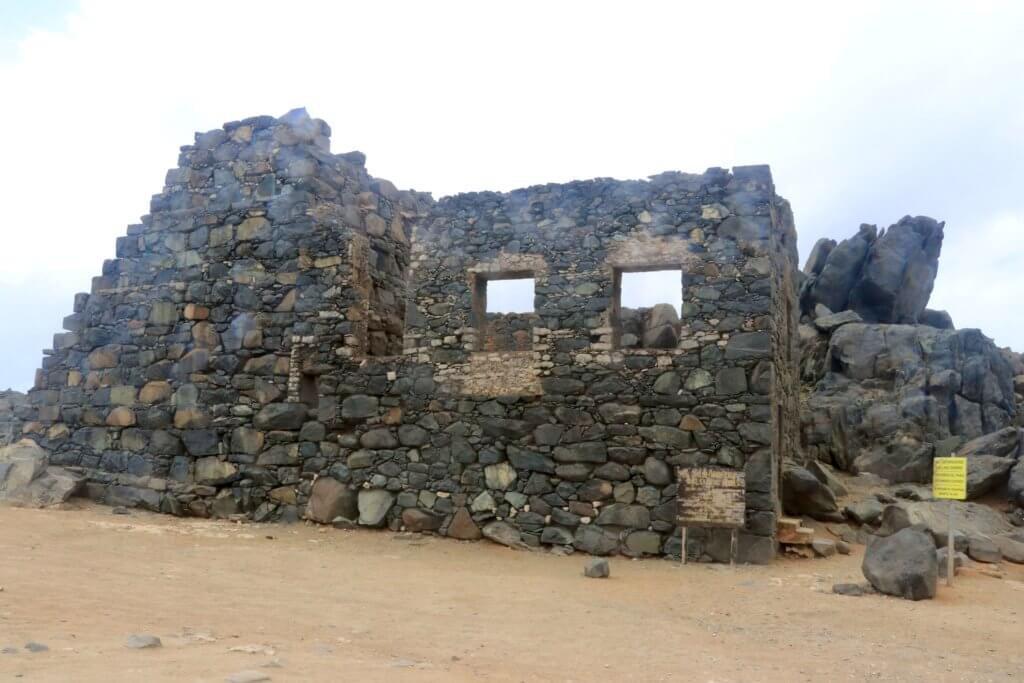
Looking at the ruins now, it’s a bit hard to picture what the gold mill must have looked like in its prime as it processed tons of rock and gold ore during Aruba’s 19th-century gold rush. But process it did; the Bushiribana Mill spent a decade as the backbone of Aruba’s gold industry before the cost of operation caused it to be shuttered.
The stone facade remains, with open windows that look out hauntingly on the vast ocean and north shore of Aruba beyond. It’s a pleasant enough place to do a bit of exploring, but I’ll admit that it paled in comparison the the cave pool adventure we’d just undertaken.
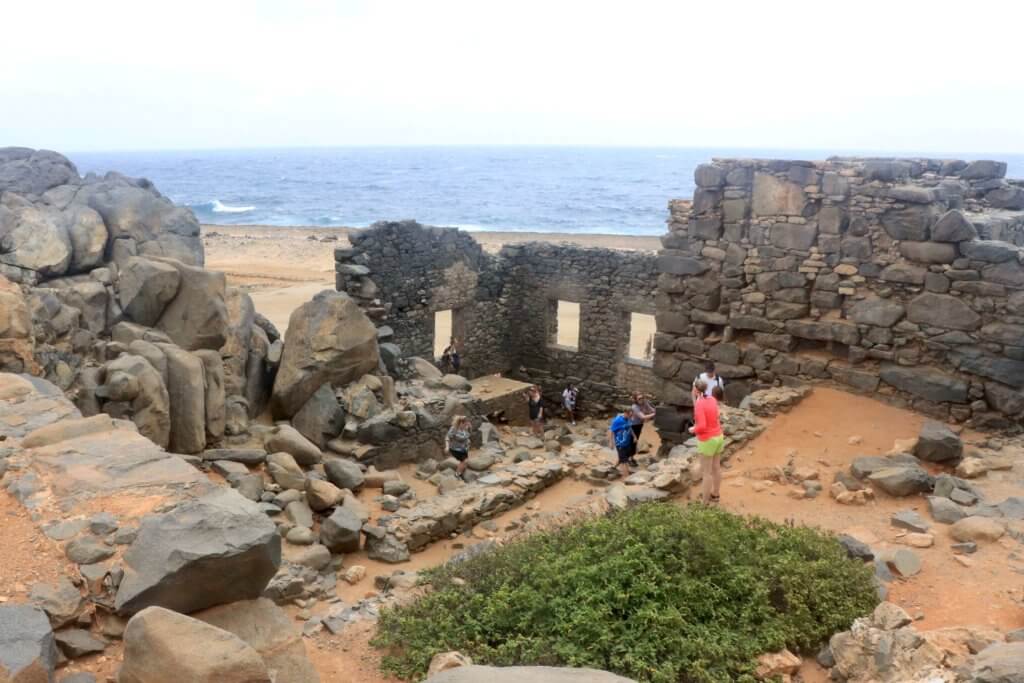
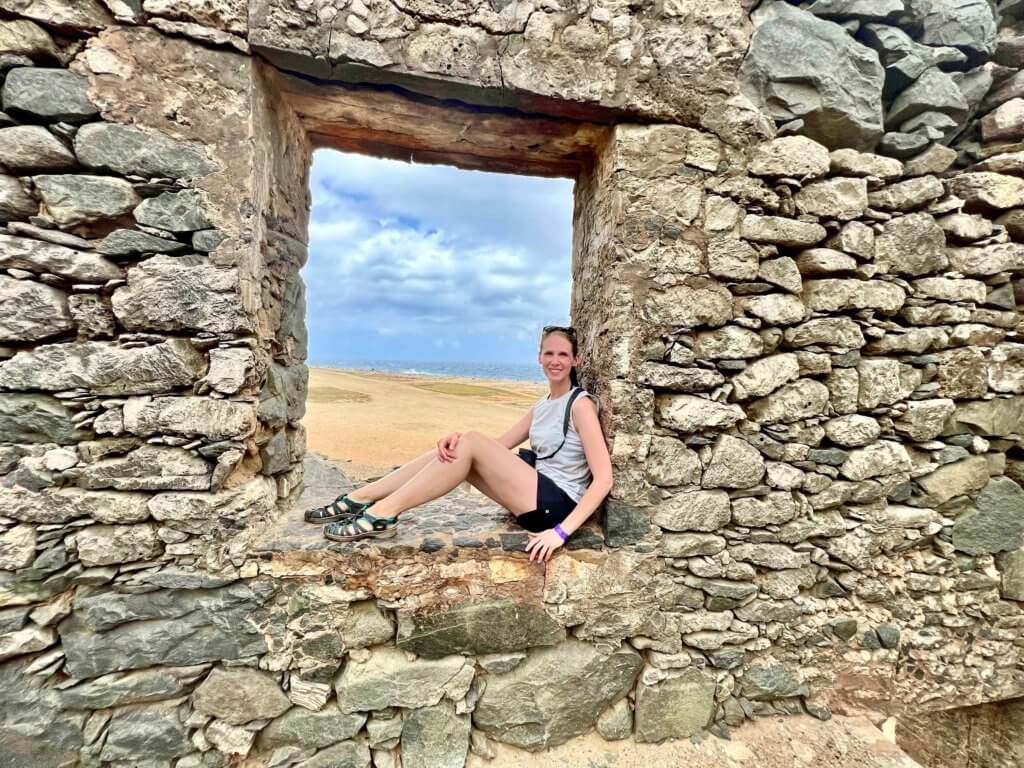
After a quick pass through the ruins, our next adventure was a long, scenic, and VERY bumpy drive up the coast to Alto Vista Chapel. Hugo expertly navigated us along the winding and rock-ridden dirt road, passing tiny beaches, rugged coves, and stately sea cliffs on one side and a seemingly endless expanse of desolate wilderness on the other.
Somewhere my chiropractor’s pulse quickened in alarm at the stress my spinal column was enduring.
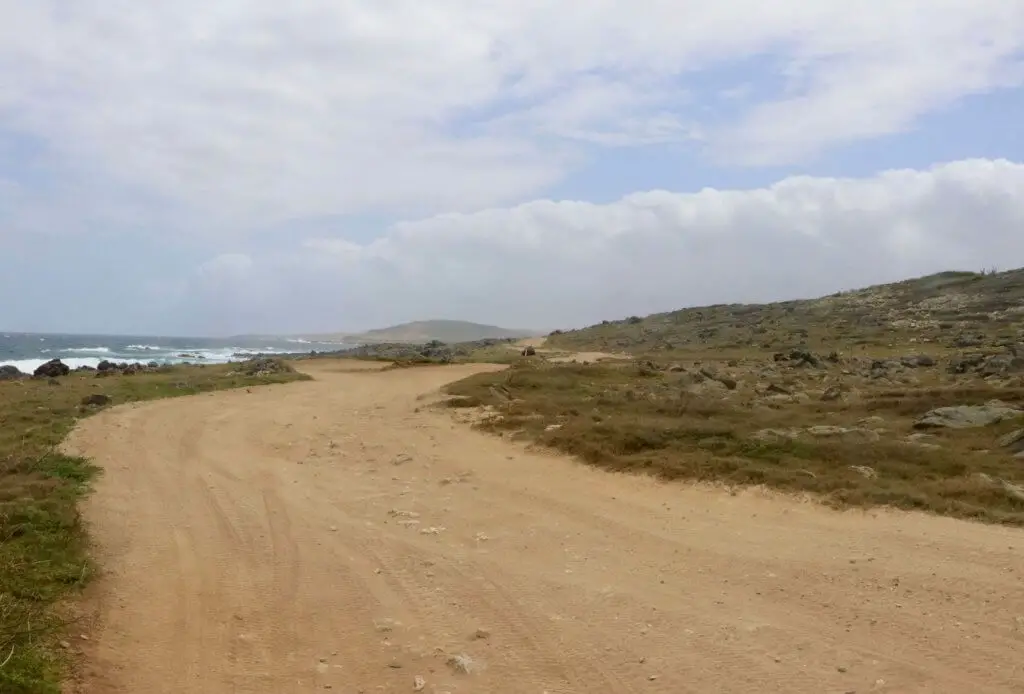
Finally, however, we reached Alto Vista, a lonely little Catholic chapel whose bright colors stand in cheery opposition to the drab countryside around it. The current chapel dates to the 1950’s, but it was built on the site of what was rumored to be Aruba’s first church, constructed in 1750. Nowadays it’s one of Aruba’s most famous landmarks and a popular stop on island tours in addition to being a place of prayer and contemplation for the faithful.
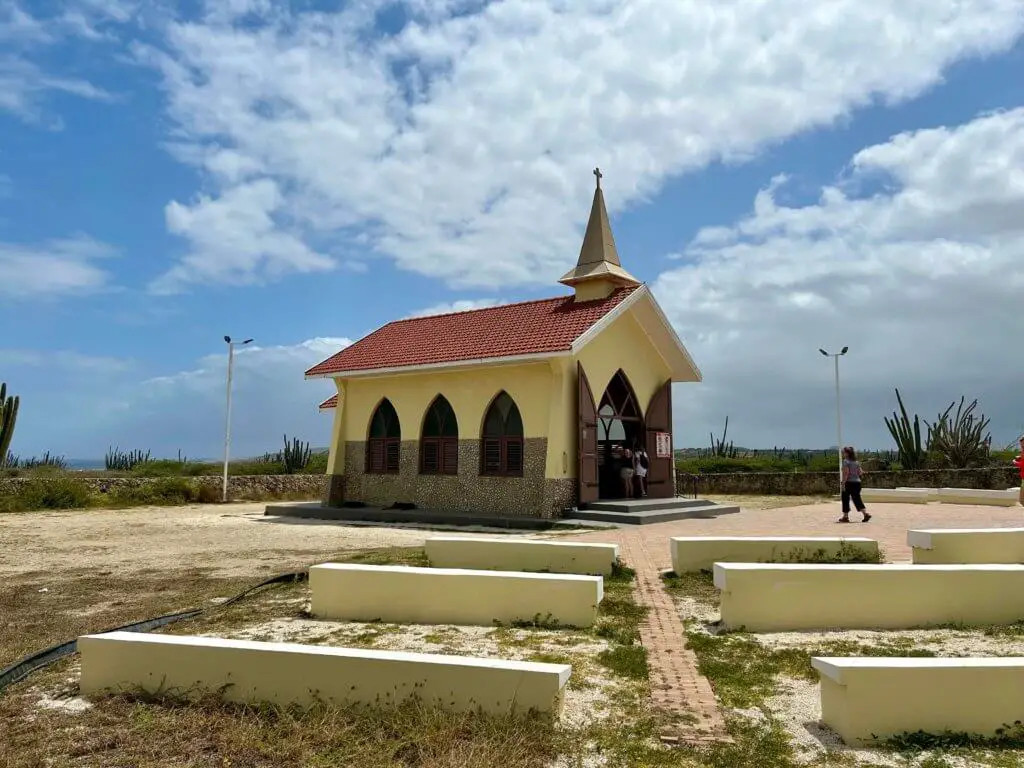
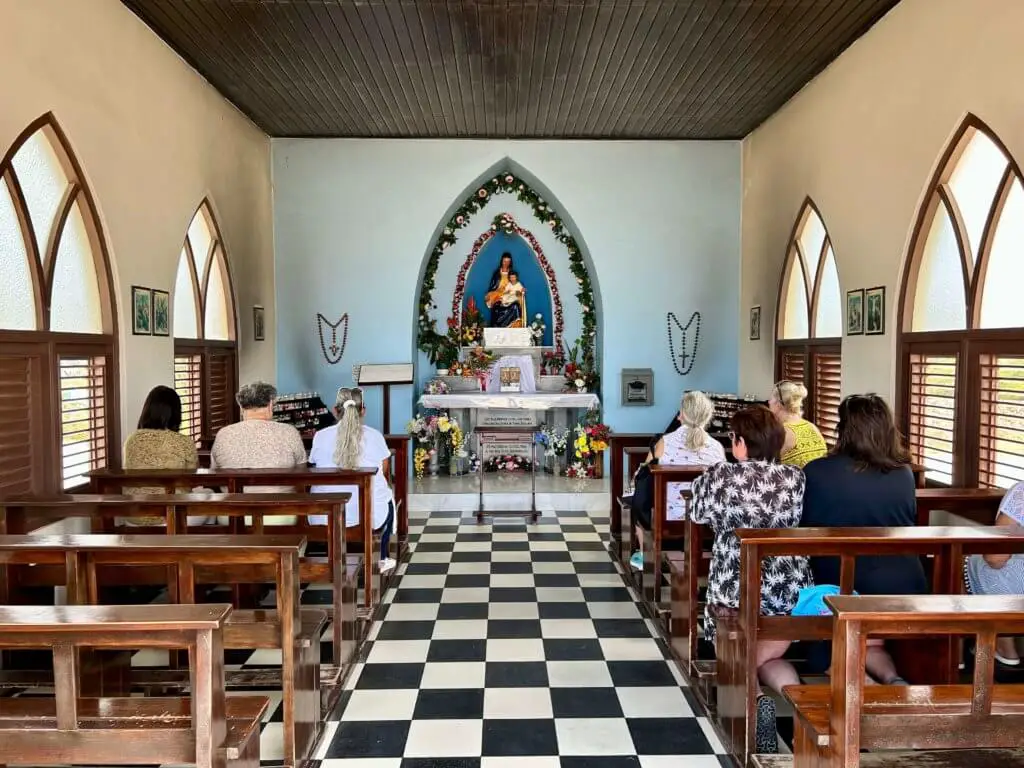
Our stop at Alto Vista was quick, though Brooke still had time to snag a fresh coconut from a nearby vendor.
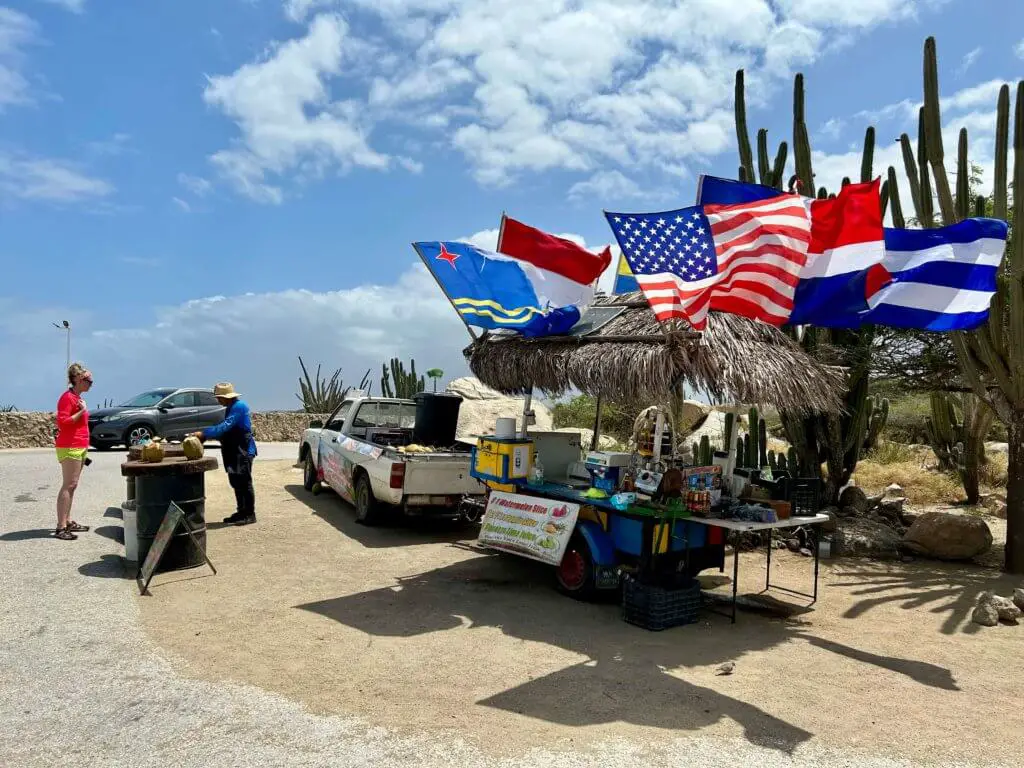
And then we were off to the second of Hugo’s consolation stops: Tres Trapi.
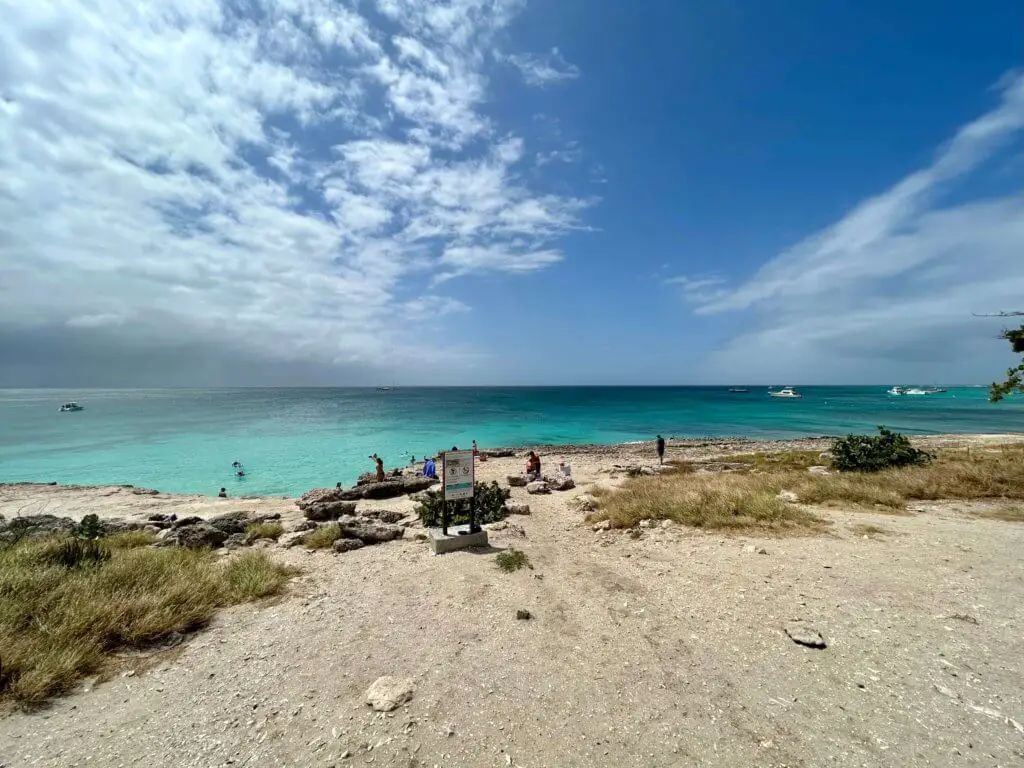
Tres Trapi, or Three Steps, is a little cove between Malmok and Boca Catalina beaches on the far northwestern corner of the island. The eponymous three stone steps take you from the rocky shore down into beautiful clear water. It’s apparently one of the best spots on the island for snorkeling, with starfish, sea turtles, and other marine life frequently on display.
Hugo passed out snorkeling equipment, which he conveniently had on hand despite the fact that the tour technically didn’t include any snorkeling. Unfortunately, we were once again foiled by the weather and rough surf, as there was very little to see in the area around Tres Trapi. Nevertheless, it was still a pretty spot, and it was nice to have another refreshing dip in the middle of our hot, dusty day.
From Tres Trapi, it was a quick, five-minute drive to the final stop on our north shore of Aruba tour: the California Lighthouse.
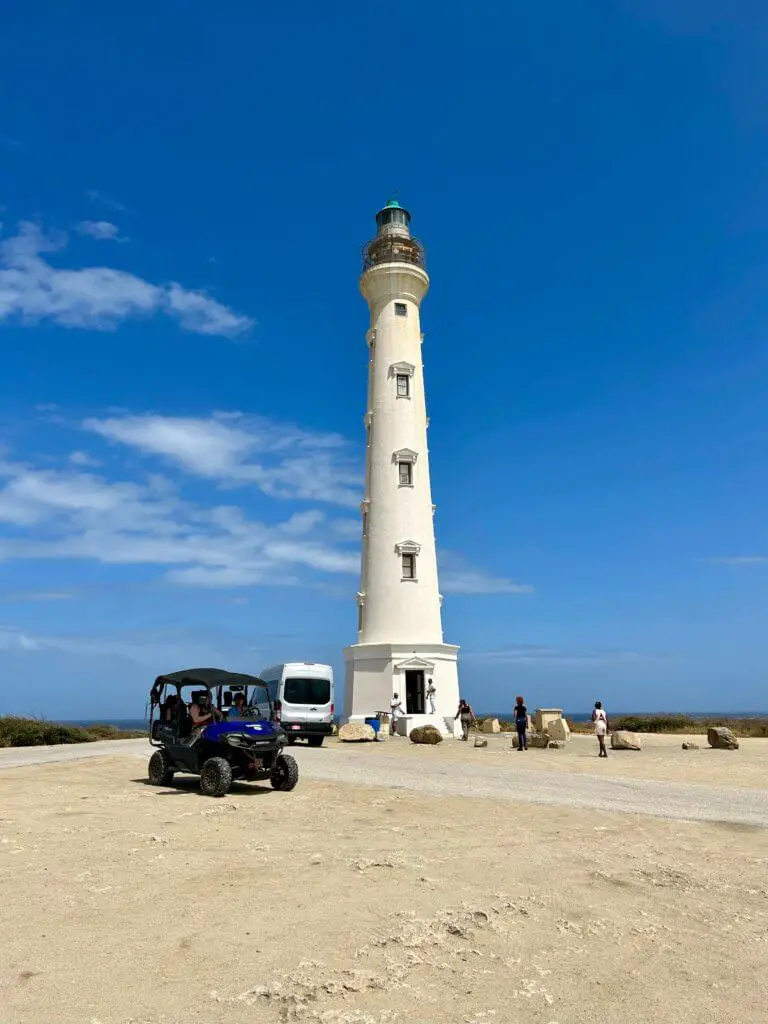
Completed in 1916 and named after a steamship that was wrecked off the coast twenty years before, the California Lighthouse is the tallest building on Aruba and offers panoramic views from the top. It costs $5 to climb the lighthouse, and I’m sure the views at sunset are absolutely divine. We, on the other hand, were content to admire the structure from the ground.
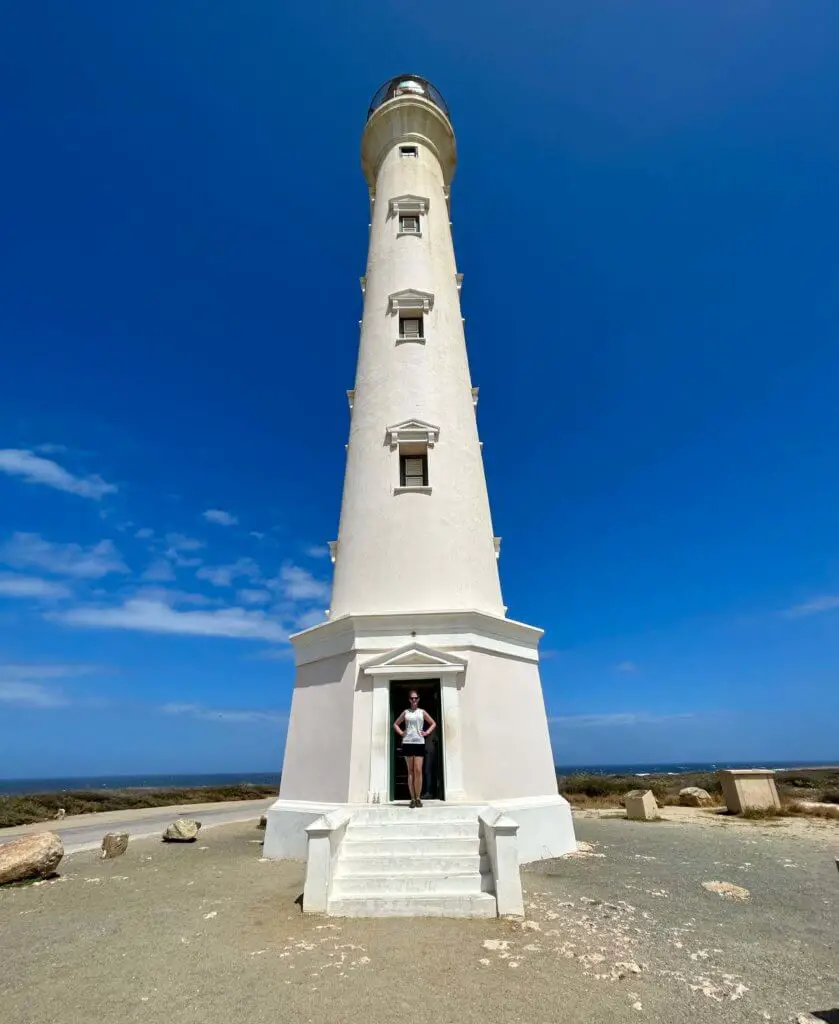
With this final Aruba icon checked off our lists, it was time to pile into the truck for our drive back to our hotel. Hugo snaked his way down the southern coast of the island, past the multi-million dollar homes that house Aruba’s elite and serve as vacation properties for the international jet set. Next came Palm Beach, with its international restaurants, glitzy shops, and high-rise hotels. And then, finally, we were back at our hotel and bidding a fond farewell to our intrepid guide. The third day of our week in Aruba had been jam-packed with new sights, strong winds, heart-pounding leaps of faith, natural beauty, and iconic landmarks.
Who could ask for more?
Tips for Visiting the North Shore of Aruba
- Visiting the Natural Pool and Arikok National Park is best done with some sort of tour, as the drive to Conchi is challenging and absolutely requires a four wheel drive vehicle.
- Despite not being able to access the Natural Pool, we still had a great experience with Rockabeach Tours and our guide, Hugo. I would highly recommend their Jeep Safari tour, and hope that you are favored with good weather to experience Conchi!
- Especially if you have only a short time to spend on the island, consider taking a tour that packs a lot of sights into one adventure. Being able to check out the lighthouse, natural bridge, chapel, gold mill ruins, and the national park in one fell swoop freed up time later on in our itinerary, and we never felt rushed despite having so many stops on our list.
- Be aware that the some of the roads traveled on this type of tour are very rough. People with back or neck problems may not do well with the jostling and bumping.
- Wear clothing that you don’t mind getting dusty or dirty, as well as sturdy, water-friendly shoes. You won’t be able to access the Natural Pool, the Cave Pool, or other slippery areas wearing flip-flops or sneakers. My KEENs worked perfectly. (Check out my Aruba packing list for more packing tips!)
- Wear your swimsuit under your clothes, as there is nowhere to change at the Natural Pool, the Cave Pool, or elsewhere.
- Don’t forget your (reef safe) sunscreen!
- Pack a lightweight microfiber towel, which will allow you to dry off after swimming adventures without taking up too much space in your day pack.
- Obey posted signs at the Natural Bridge site, as the rocks and cliffs are unstable and prone to collapse.
- Be prepared to pay to use the bathroom at the Natural Bridge.
- Watch your step walking down to the Cave Pool, and don’t go if the waves are washing over your path. My sister and I are tall, so Hugo also had us cannonball into the water rather than diving or jumping because the water wasn’t terribly deep.
- The Alto Vista Chapel is still in use as a house of prayer and worship, so please show respect while visiting.
- Tips for your guide are greatly appreciated. A good guideline is to tip 10%-15% of cost of the tour.
And here are some tips for our “consolation stops,” which were technically on Aruba’s southern coast:
- Mangel Halto is an excellent spot to enjoy a day at the beach without the crowds. It also offers good snorkeling, kayaking, and stand-up paddleboarding opportunities. There are shaded areas and a couple of public beach cabanas, but I didn’t see any other services. It also makes a great stop on a day trip to San Nicolas!
- The terrain around Tres Trapi is rough and painful on bare feet, so make sure to wear some sort of shoe to get you to the steps.
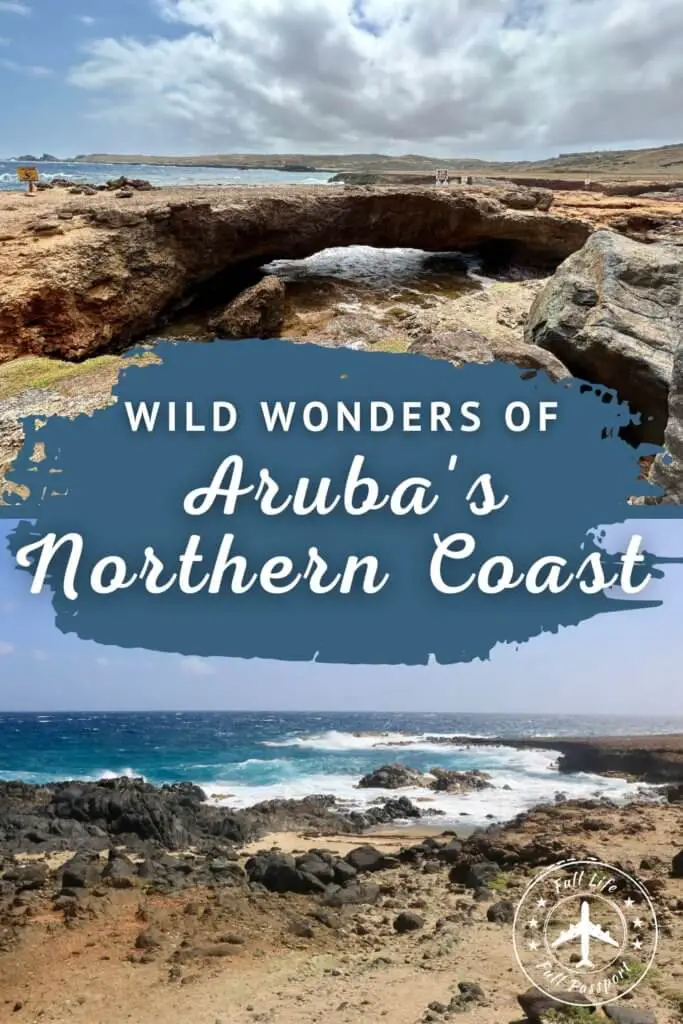
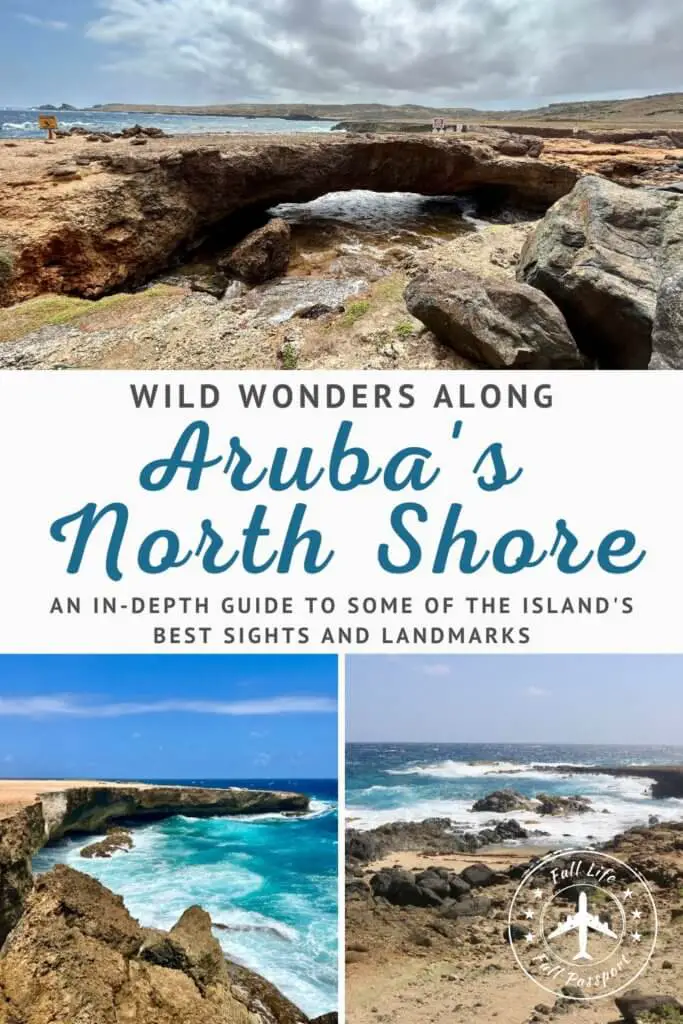
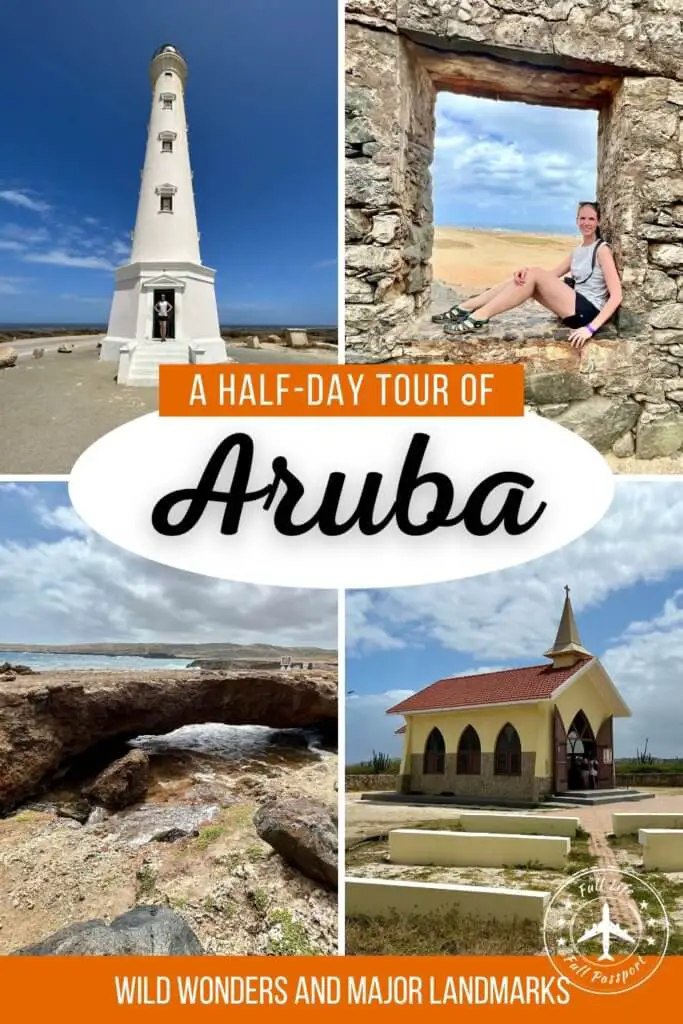
Like the post? Pin to save or share!
Read More:
Need some help planning your trip to the north shore of Aruba (or any other part of the island)? Full Life, Full Passport offers customized planning services for all kinds of vacations and budgets!
Join Our Email Community!
Want to be the first to know when a new post is published, or to receive exclusive content directly to your inbox? Sign up here!
(We'll never sell your information.)
Awesome!
You have successfully joined our mailing list. Make sure to check your SPAM/junk mail if you don't hear from us soon.
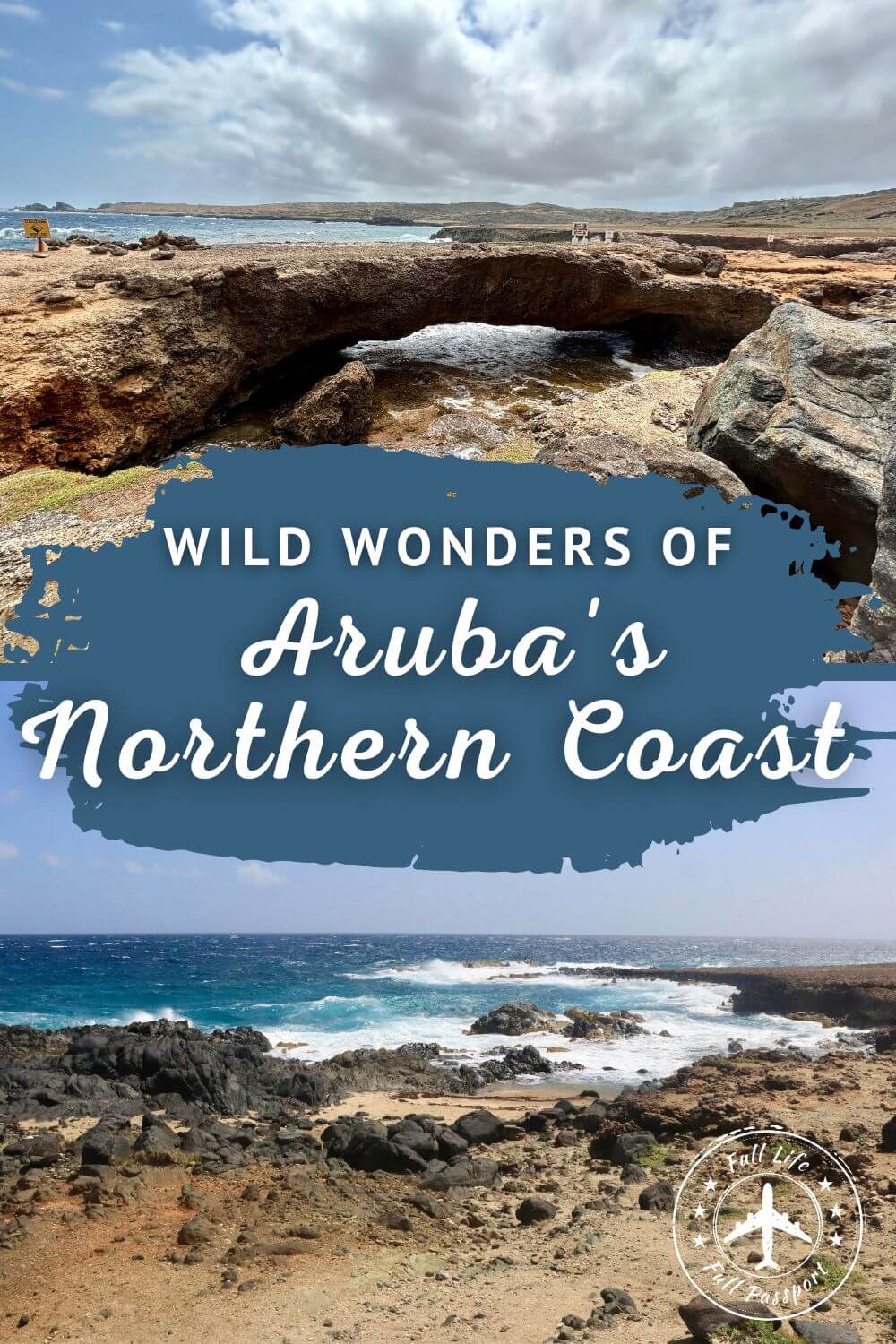
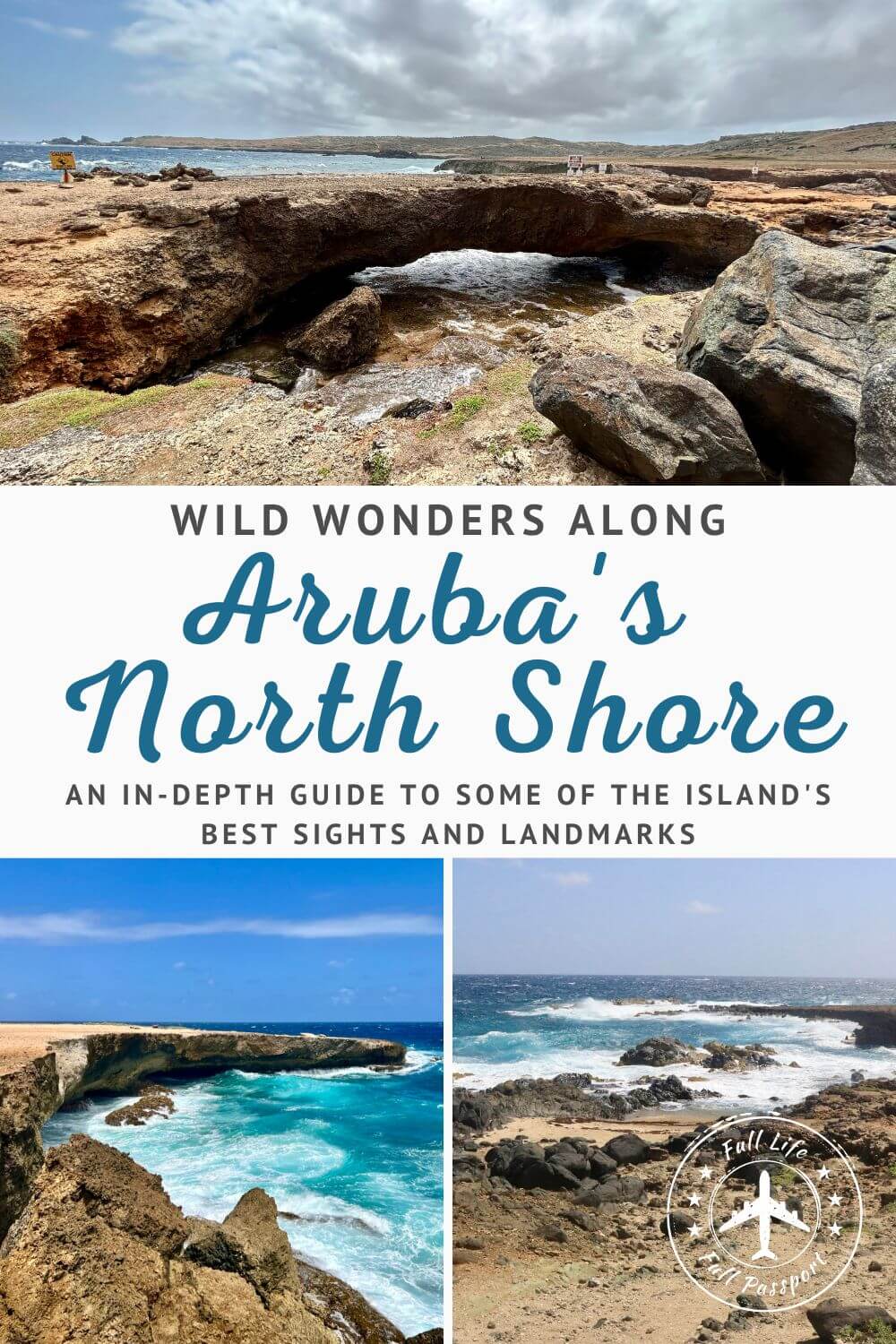
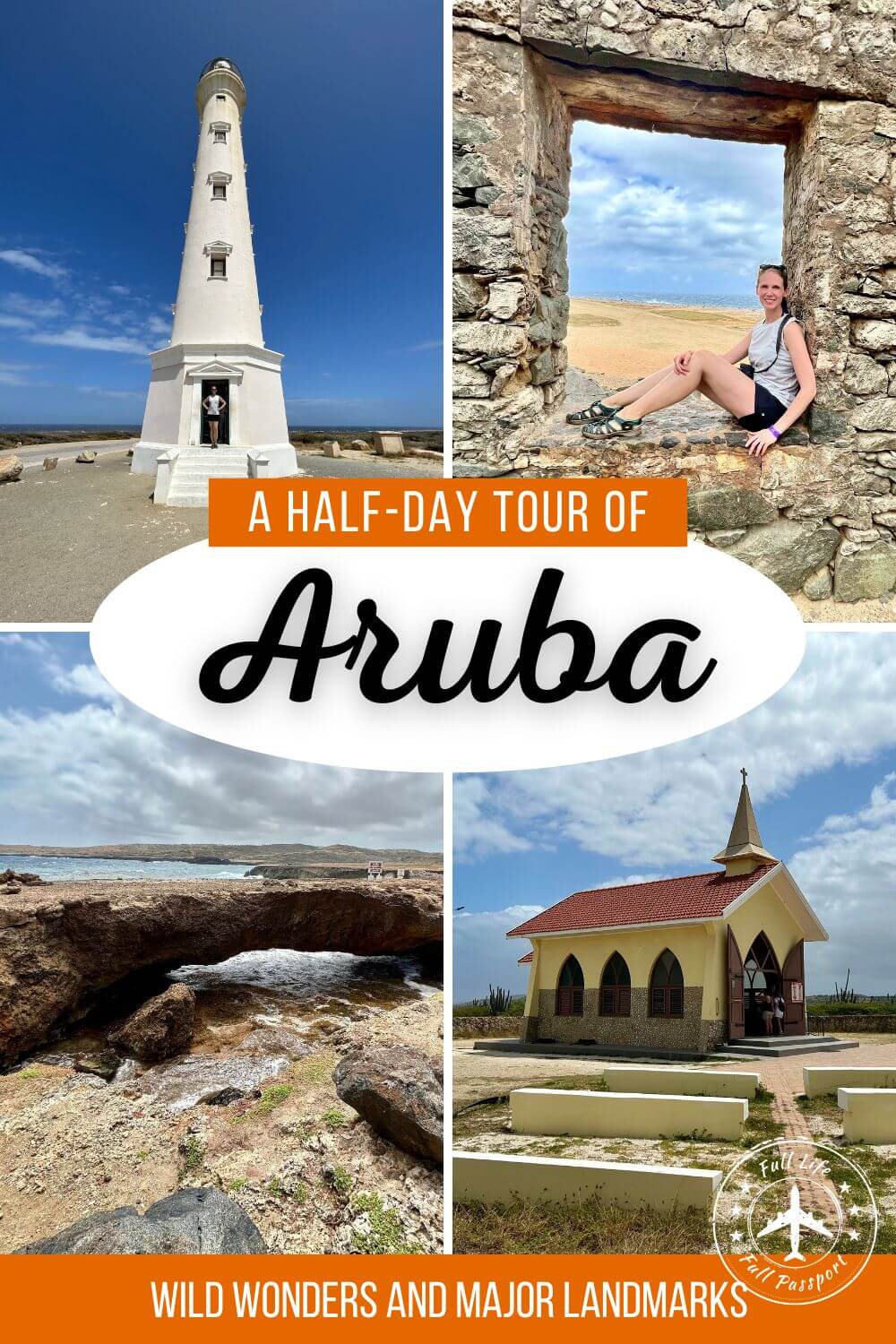

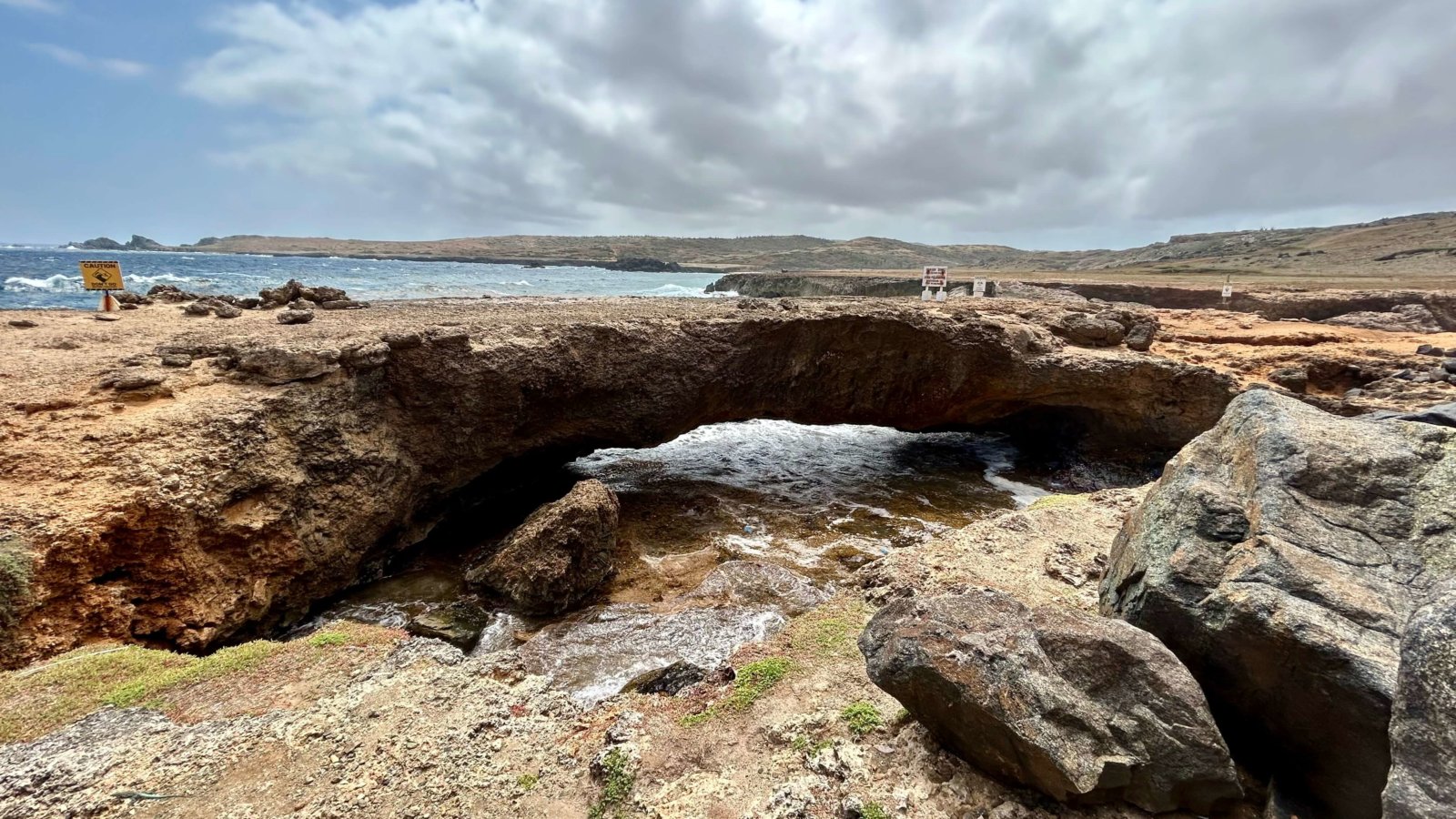
 25 of Aruba’s Best Restaurants
25 of Aruba’s Best Restaurants